#Join the Paragon Christian Alliance
Explore tagged Tumblr posts
Text
Join the Paragon Christian Alliance today and obtain ministry credentials and 501(c)3 status in as little as 30 days. Apply now.
0 notes
Text

CHARACTER INFO:

FULL NAME: jasper 'jazz' shepard.
NICKNAME: prefers to go by shepard, but people closet to him get to call him jasper ( which still takes some getting used to on his part as he’s mostly gone by his surname in the military).
AGE: 35 ( mass effect 1 ), 38 ( mass effect 3 ).
FACE-CLAIM: joel kinnaman.
BIRTH SIGN: aries.
GENDER: cis male. he/him.
OCCUPATION: N7 Marine, Commander of the Normandy.
RENEGADE OR PARAGON?: He leans more renegade in battle situations, and paragon when dealing with personal situations/other crew members ( though he doesn't do inter-personal fighting. for example: miranda & jack arguing, he won't take sides but takes the renegade option. same with tali & legion ).
ABILITIES: biotic charge, pull,
EXTRAS:
PHYSICAL TRAITS:
EYE COLOUR:
HAIR COLOUR/TEXTURE:
HEIGHT:
BODY BUILD:
NOTABLE PHYSICAL TRAITS:
MENTAL:
JUNG TYPE:
MOTIV:
ENNEAGRAM:
ROSENBERG SELF-ESTEEM:
TEMPERAMENT:
SOUL TYPE A:
SOUL TYPE B:
MENTAL DISORDERS: PTSD, depression.
PHOBIAS AND BEHAVIORS:
PHOBIAS:
BEHAVIORS/QUIRKS:
HISTORY:
In the year 2148, Jasper is born and placed in the care of an orphanage located in a southern city of America that’s overflowing and hard to navigate. Orphanages are often overlooked, especially if they’re in the less-kept districts of the city. The orphanage gives the children all Christian last names, and Jasper happens to get Shepard.
Early on, Jasper discovers that acting out gets him attention, so he becomes an unruly child. A fellow orphan by the name of Abigail decides to make it their job to befriend Jazz, and soon they’re inseparable. But because of Jasper’s tendency to be destructive, he isn’t adopted on the rare occasion seeking parents come to the orphanage. Abigail, when they’re near the age of 9, is; she is taken in by an Alliance war veteran and her wife. They remain close friends despite being separated, as Jasper often sneaks over despite being told not to.
At the age of 12, Jasper, now coming to terms with the reality he may never be adopted, joins a rather infamous gang in the area. While he still remains friends with Abigail, they do become distant. While Jazz is taking a dangerous path in life, Abigail is on the straight and narrow.
Age 15 and Jasper is well-known for petty crimes, among his dealings with gangs in the city. While he does visit Abigail when he can, it’s infrequent and clear he’s changed. He’s become more violent, aggressive, and cynical. When he does see Abigail, a man by the name of David Anderson is visiting the family. Anderson takes a liking to Jasper, saying he sees a bit of himself in the scrawny kid.
When he turned 16, the gang he was a part of decided to throw a bash for him. He invited Abigail. While they were told not to go, they snuck out anyway. A rival gang came along and shot the place up, resulting in Abigail being collateral damage. Jasper took their death hard and blamed himself. Abigail’s parents resented him. Out of respect for his friend, Jasper tried to escape the gang he was a part of with Anderson’s help. The Alliance is suggested, saying it’d be good for routine in Jasper’s life.
At 18-21, Jasper joins the Alliance. He’s discovered to have latent biotic abilities. Given that biotics are retrofitted with amplifiers at puberty, Jasper is considered a late bloomer. He does get the latest amplifier, but he’s considered behind on training. Because of this, Jasper overworks himself with his train, trying to make up for lost years. He even volunteers for experimental treatments and programs. While his efforts train him to become a powerful biotic, classed Vanguard, a lot of it leaves him with chronic body aches that some might consider debilitating at times ( of which he does not divulge).
Age 21. Jasper enters the N7 alliance program under the recommendation of Anderson and his biotic mentors.
Age 27. The Skyllian Blitz. Jasper is sent to Elysium to help the human colony against the assault from pirates and slavers.
Age 29. Jasper and his fellow marine unit are sent to Akuze to investigate the mysterious silence of a human colony. In the middle of the night, a thresher maw attacks the group. Most are killed off. The rest die later of wounds. Jasper endures hardships under extreme survival circumstances. He’s the only one who makes it through. Because of this event, many superior officers insisted he is put on extended leave from the military as no one can go through what happened on Akuze and be mentally sound (in their words). In truth, Jasper was not but felt it would be better for him to stay in given his need for routine. With help from Anderson and Hackett, he is allowed to remain active as long as he goes to his scheduled psych evaluations and discusses his issues with his psychiatrist.
AGE 35. The events of Mass Effect 1 begin.
#[ COMMANDER SHEPARD / about. ]#(#I haven’t completely finished it so I’ll work on the litttle personality tid bits later#anyway#Joel kinnaman in Hanna is peak commander vibes#idk why it just gave me muse#)
3 notes
·
View notes
Photo

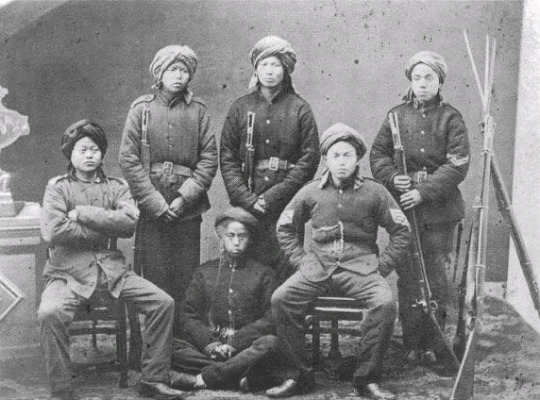
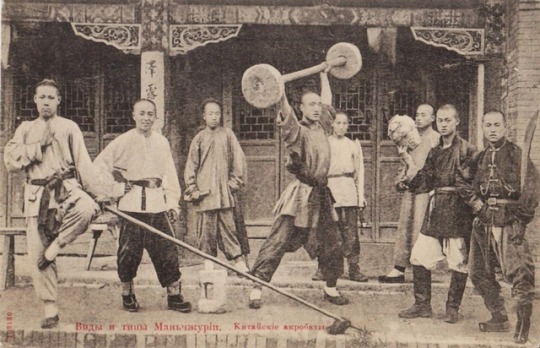
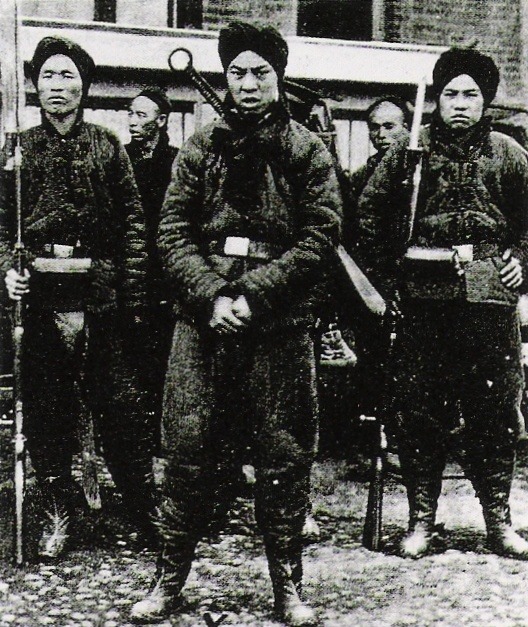

TO TOPPLE A DYNASTY: KUNG FU REBELS AND THE CYCLE OF HISTORY
“The last time China’s government collapsed was just over 100 years ago, when the Qing Dynasty fell after almost four centuries of rule. The fall didn’t happen in a day, ranging instead over a century of unrest and violence that began around 1850 and ended in 1950 when the Communist Party consolidated rule over most of the country.”

“The martial arts played a critical, prominent role in the rebellions and warfare that tore the nation apart and eventually toppled the Emperor. Four rebellions in particular put the role of the martial artist in times of social unrest into perspective, and also help place the current martial arts infrastructure in China into stark contrast with the institutions that existed 100 years ago.”
Those rebellions are the Red Turban or “Opera Rebellion” (1854 - 1855), the Red Spears Uprising (powerful in the 1920s and 30s), The Boxer Rebellion (1899 - 1901) and the most destructive civil war in the history of mankind, the Taiping Rebellion (1850 - 1864).”
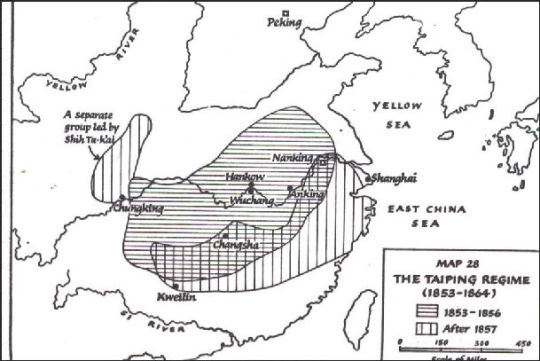
“Officials and martial arts societies in Guangzhou at this time were faced with a choice: join the rebels and chaos or join the Imperials and order. The elites and their martial retainers chose order. After that choice was made, the rebellion was crushed and the elites went on a violent purge of the underclasses, slaying up to a million boatmen, wanderers, broke people, performers, unaffiliated thugs and martial artists. The Opera Rebellion demonstrates the tendency of the Chinese elite to use and exploit the martial element of society when needed, and destroy and pacify it when not.”

”The Opera Rebellion was one of the first steps towards solidifying the relationship between the State and martial artists, one in which kung fu societies would either serve the government or be annihilated. China’s government still uses thugs whenever they need them. The attempted suppression of the Occupy Central movement in Hong Kong through Triads and other gangsters was widely thought to be a Beijing ploy. It certainly fits in with the old tactics that have worked for centuries and the way the whole thing went down in Hong Kong smacks of how the Chinese central government does their thing.”

“The Red Spear Society in Henan Province was perhaps the largest pure martial arts uprising of its time, although “uprising” is not entirely accurate. The Red Spears (1916 - 1949) were a response to the complete breakdown of social, economic, and political institutions in north-central China. Famines, warlordism, corruption, banditry along every road...The Red Spears were essentially groups of more or less trained martial artists who worked with local elites and landlords to establish a semblance of order. But what in fact happened was just banditry in a more organized fashion.”

“The Red Spears and their many offshoots and enemies “ruled” Henan until the Northern Expedition of 1928 by the Chinese Nationalists under Chiang Kai-shek re-established some kind of government control over the area. This is the same expedition that resulted in the razing of the Shaolin Temple and the destruction of several rebel bands, but didn’t actually maintain control. The area would be the demesne of martial artists armed with spears, swords, bucklers, muskets and the odd rifle for another 20 years, until the Communists assumed strong central control over China.”

“As with the Opera Rebellion, the authorities didn’t immediately annihilate the martial bands and their leaders. They had a choice. Go home and be obedient citizens, or be destroyed. The authorities eventually co-opted many of the societies affiliated (or opposed to) the Red Spears and established a whole new set of institutions to channel and control the martial element within Chinese society. Sports universities and wushu associations, for example, replaced the clans, fiefs, and martial arts schools that formed the core of the martial infrastructure in the 19th century. Anyone willing to enter this new path for the martial artist was welcome, those who did not were purged.”
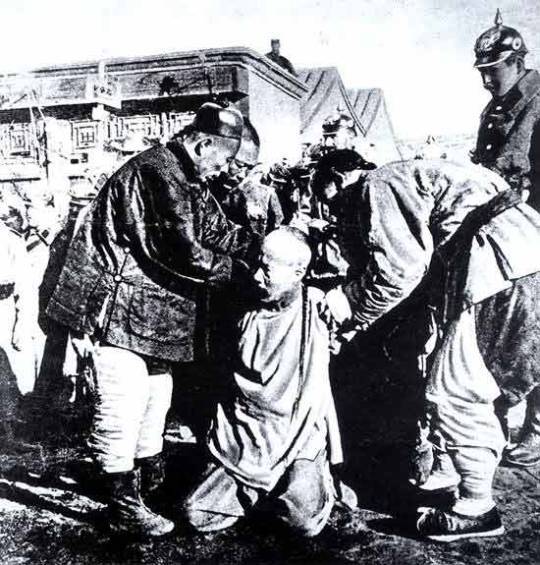
“Martial arts in China is a part of society that cannot be burned out, purged into oblivion, or ignored. No matter what happens to kung fu in China, it has always popped back up. It is still commonplace today for business-owners in a dispute to call upon the kung fu guys they know for muscle. Guns are hard to come by in China, so most of the street level fighting is done with fists, bottles, or knives. In a corrupt society ruled by class and social distinctions more than by the rule of law, kung fu has its place. The Communist Party understands this and has done a solid job of channeling kung fu into the movies, sports, and security apparatus. That will work as long as the authorities maintain a monopoly on dispute resolution and violence. When the government does not hold this monopoly, the old violent cycle of rebellion and disunity follows.”

“More than 20 million people died during the Taiping Rebellion, history’s nastiest and most destructive civil war. The war lasted for two decades. To try and give this perspective, about 600,000 people died during the American Civil War, which was raging at the same time.”

“The Taiping Rebellion was born in a perfect storm of widespread economic hardship, official malfeasance and weakness, the rise of regional bandit and kung fu societies, and religious heterodoxy. Geopolitically China was in bad shape, having lost the First Opium War and about to lose the Second. Socially, the entire country was a patchwork of regional governors working within constantly shifting alliances involving a hundred thousand different societies, organizations, gangs, associations and what not ... an unstable quilt of betrayal and greed that operated with impunity beneath the charade of paternal Imperial rule.”

“The spark that lit all of this dry wood into a 20 year conflict was a self-proclaimed prophet, Hong Xiuquan, who foretold the fall of the ethnic Manchus and their Qing Dynasty to an alliance of quasi-Christian ethnic Han rebels who would usher in a new modern era for China. The martial arts societies that grew and flourished all over China as the Qing’s power waned made up a large part of the Taiping armies. The martial element within society formed under a cultish banner to assault the status quo in the hopes of creating a new society. Their new society was based ostensibly on equality and the abolition of old Imperial accoutrements like Confucianism, Buddhism, and the idea of a Dynasty altogether.”

“Hong and his followers failed and were eventually crushed. Their failure came about mostly due to Western powers who lent their aid to the Qing Dynasty at a critical juncture, the Battle of Shanghai, and then helped form a modern army that could take on and defeat the Taiping forces. After the Taiping capital at Nanjing was taken, the Imperials spent another 10 years hunting down the rest of the Taiping forces before the threat was permanently extinguished.”
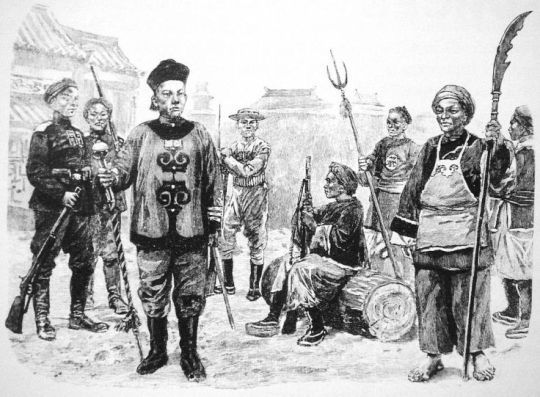
“The Communists have drawn many lessons from the Taiping Rebellion: Crush any heterodox religious movement before it can grow. Keep the “prophets” separated from the commoners who make up the core of every rebel army that ever existed. Co-opt and control the martial arts and never allow the three (commoners, prophets, martial artists) to combine into a powerful anti-government force.”
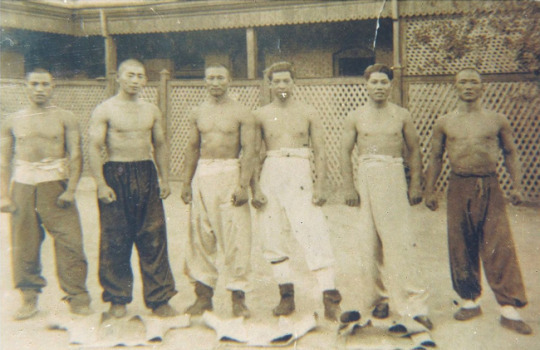
“The Taiping Rebellion was, among many other things, such a combination, but where the Taiping rebels failed, the Communists succeeded. A combination of commoners, martial elements, and the cultish power of Marx embodied in Mao eventually did erase the dynasty and establish a new society, also based on ideals any commoner could get behind. The Communist Party has since rehabilitated the Taiping Rebellion, and placed those rebels within the context of a century long struggle to throw off the Imperial yoke and gain freedom for the proletariat.”

“The Boxers were a band of “Righteous and Harmonious Fists” who called for the expulsion of foreigners and the restoration of the Imperial order. For two years they split the Qing government in two, with the pro-Boxer faction including the Empress Dowager Cixi calling for all out war against the foreign powers on one side, and conciliatory diplomats on the other. In chaotic battles involving irregulars armed with swords as well as Imperial soldiers armed with the most modern cannons at the time, the Boxers and their allies defeated foreign armies and besieged foreign legations within Beijing. The uprising also led to widespread killings across China, mainly targeting Christians and missionaries.
The Qing were betrayed by regional warlords who refused the call to war against the foreigners, and after protracted battles in Beijing and Tianjin, the rebellion was put down by the Eight Nation Alliance (Western powers)...ordered the Qing to pay reparations (around $61 billion in modern terms) and execute many top officials.”

“And for much of Chinese history, that’s what martial artists tended to be. Performers and bodyguards, dispute-settlers and paragons of idealistic virtue. It’s only when the government stumbles, leaving a vacuum, that kung fu people become the type of force that step in and help keep order, or help topple a dynasty. In that sense, it doesn’t matter if the kung fu people of today are rebellious or obedient, it matters more that the government maintains a monopoly on force and justice. Once that monopoly is challenged, the old cycle of history tells us that violence is right around the corner.”

(via To Topple a Dynasty: Kung Fu Rebels and the Cycle of History | FIGHTLAND)


Chinese names in traditional Chinese family culture
“Within each family system, besides the common family name, descendants often specify another common character in their given names for each generation. This common character in given name is called the "Spreading Character", which is an indication of the person's generation within the family system.The Spreading Character can be either the first character or the second character of the given name.”

Generational (spreading) names that are shared among brothers and cousins may be based on (or a variant of) the mother’s or grandparent’s family name, usually if the clan has higher status than the father’s family name.
Generational name
“Generation name, variously zibei or banci, is one of the characters in a traditional Chinese given name, and is so called because each member of a generation (i.e. siblings and paternal cousins of the same generation) share that character. Where used, generation names were usually given only to males.
Generation names may be the first or second character in a given name. Normally this position is consistent for the associated lineage. However some lineages alternate its position from generation to generation. This is quite common for Korean names. Sometimes lineages will also share the same radical in the non-generation name.”

Korean name
"During the Three Kingdoms period, native given names were sometimes composed of three syllables like Misaheun (미사흔) and Sadaham (사다함), which were later transcribed into hanja (未斯欣, 斯多含). The use of family names was limited to kings in the beginning, but gradually spread to aristocrats and eventually to most of the population.[25]
According to the chronicle Samguk Sagi, family names were bestowed by kings upon their supporters...For men of the aristocratic yangban class, a complex system of alternate names emerged by the Joseon period. On the other hand, commoners typically only had a first name.[17] Surnames were originally a privilege reserved for the yangban class, but members of the middle and common classes of Joseon society frequently paid to acquire a surname from a yangban and be included into a clan.”

“The initial sound in "Kim" shares features with both the English 'k' (in initial position, an aspirated voiceless velar stop) and "hard g" (an unaspirated voiced velar stop). When pronounced initially, Kim starts with an unaspirated voiceless velar stop sound; it is voiceless like /k/, but also unaspirated like /ɡ/. As aspiration is a distinctive feature in Korean but voicing is not, "Gim" is more likely to be understood correctly. "Kim" is used nearly universally in both North and South Korea.[40]
In English publications, usually Korean names are written in the original order, with the family name first and the given name last. This is the case in Western newspapers. Koreans living and working in Western countries have their names in the Western order, with the given name first and the family name last. The usual presentation of Korean names in English is similar to those of Chinese names and differs from those of Japanese names, where they, in English publications, are usually written in a reversed order with the family name last.”[43]
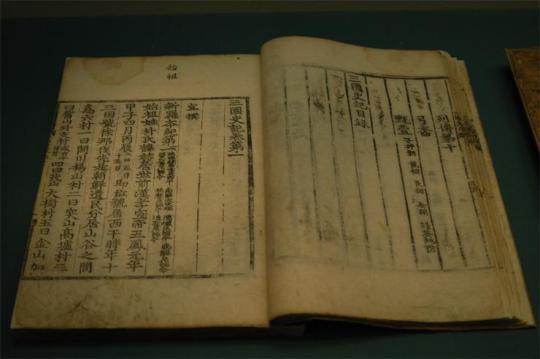
Samguk sagi
“Samguk sagi (삼국사기, 三國史記, History of the Three Kingdoms) is a historical record of the Three Kingdoms of Korea: Goguryeo, Baekje and Silla... the Records of the Grand Historian, this work was released circa 100 BCE under the more modest title of Shǐjì 史記, i.e. Scribe's Records. By allusion, Kim Busik called his own work 三國史記, i.e. Samguk sagi, where Sagi (nowadays 사기) was the Korean reading of the Chinese Shǐjì.[1]
"Native heritage" is primarily interpreted by the Samguk sagi to mean "Three Kingdoms heritage" brings us to the work’s ostensibly broader purpose, and that was to promote Three Kingdoms...as the orthodox ruling kingdoms of Korea, and to thus solidify the legitimacy and prestige of the Goryeo state, as the Three Kingdoms’ rightful successor. In this way it helped to confer the idea of zhengtong 正統, or "orthodox line of succession", upon the new dynasty. It was with just such intent that Goryeo's King Injong tapped Kim Busik to compile the history of the Three Kingdoms. Goryeo’s quest, through the writing of the Samguk sagi, to secure its legitimacy and establish its continuation of the "mantle of authority" (or Mandate of Heaven) from the Three Kingdoms.”

Manchu name
“Like the Mongols, the Manchus were simply called by given name but they had their own clan names (hala in Manchu)...The Comprehensive Book of the Eight Manchurian Banners' Surname-Clans (八旗滿洲氏族通譜 Baqi Manzhou Zhizu Tongpu), compiled in the middle 18th century, records many Manchu clan names. Among more than a thousand names, about 600 names are the Manchus'.
Gioro, a major clan name, is the one of the few hala that has various variants such as Irgen, Silin and Šušu, possibly to distinguish from the imperial family name Aisin-Gioro. Since the mid-to-late Qing Dynasty, Manchus have increasingly adopted Han Chinese surnames, and today, very few Manchus bear traditional Manchu family names.”

Naming taboo
“A naming taboo is a cultural taboo against speaking or writing the given names of exalted persons in China and neighboring nations in the ancient East Asian cultural sphere.
The naming taboo of the state (国讳; 國諱) discouraged the use of the emperor's given name and those of his ancestors...The strength of this taboo was reinforced by law; transgressors could expect serious punishment for writing an emperor's name without modifications. In 1777, Wang Xihou in his dictionary criticized the Kangxi dictionary and wrote the Qianlong Emperor's name without leaving out any stroke as required. This disrespect resulted in his and his family's executions and confiscation of their property.”[1]

Eight Banners
“The Eight Banners were administrative/military divisions under the Qing dynasty into which all Manchu households were placed. In war, the Eight Banners functioned as armies, but the banner system was also the basic organizational framework of all of Manchu society.
Although the banners were instrumental in the Qing Empire takeover of China proper in the 17th century from the Ming dynasty, they began to fall behind rising Western powers in the 18th century. By the 1730s, the traditional martial spirit had been discarded, as the well-paid Bannerman spent their time gambling and theater going. Subsidizing the 1.5 million men, women and children in the system was an expensive proposition, compounded by embezzlement and corruption.
In the 19th century, the Eight Banners and Green Standard troops proved unable to put down the Taiping Rebellion and Nian Rebellion on their own. Regional officials like Zeng Guofan were instructed to raise their own forces from the civilian population, leading to the creation of the Xiang Army and the Huai Army, among others. Along with the Ever Victorious Army of Frederick Townsend Ward, it was these warlord armies (known as yongying) who finally succeeded in restoring Qing control in this turbulent period.”

“During the Boxer Rebellion, 1899–1901, 10,000 Bannermen were recruited from the Metropolitan Banners and given modernized training and weapons...Many Manchu Bannermen in Beijing supported the Boxers and shared their anti-foreign sentiment.[50] The Manchu Bannermen were devastated by the fighting during the Boxer Rebellion, sustaining enormous casualties during the war and subsequently being driven into desperate poverty.[51]
By the late 19th century, the Qing Dynasty began training and creating New Army units based on Western training, equipment and organization. Nevertheless, the banner system remained in existence until the fall of the Qing in 1911, and even beyond, with a rump organization continuing to function until the expulsion of Puyi (the former Xuantong emperor) from the Forbidden City in 1924. At the end of the Qing dynasty, all members of the Eight Banners, regardless of their original ethnicity, were considered by the Republic of China to be Manchu.”

Chinese Interpreters in San Francisco
“The Court Interpreter, Moy A. Non, has officiated in numerous cases, but none of his countrymen have sought to molest him. It is a very pretty riddle to solve, and is, to say the least of it, rather suggestive. The Court Interpreter is armed with unlimited power for evil, and it certainly behooves the authorities to leave no stone unturned to replace him with a white man.”

“In several cases where a Caucasian interpreter has been called in, his translations have been contradicted, his knowledge of the Chinese tongue ridiculed, and the Court thereby embarrassed. The Court is powerless to detect fraud in the books of Chinese firms, and is compelled to rely solely upon the translations of a Chinaman whose life would not be worth a nickel were he a stumbling block in the path of the Chinese firms. Those books are produced as evidence that the applicant for debarkation resided here formerly, and it rests altogether with the interpreter whether he gives the Court a true or a false reply. It is humiliating to the last degree to behold the administration of the law placed at the mercy of one whose every instinct despises it, and whose very existence depends upon his perjuring himself to thwart it.”
January 13, 1884, Daily Alta California, San Francisco, California, U.S.A.

What Did Chinatown Leaders Do to Avert Anti-Chinese Violence? Did They Succeed?
“In 19th century New York, the presence of well-connected Chinese figures like Honorary Deputy Sheriff Tom Lee and the pioneering civil rights advocate Wong Chin Foo gave the Chinese community there a very different public image from that of Chinese in Sacramento or San Francisco.
Chinese leaders in the big California cities had different backgrounds than Chinese leaders elsewhere in North America. While in Chicago and New York, community leadership came from merchants and other businessmen, in California it was in the hands of diplomats and high-status scholars brought specially from China to head the various regional associations. Such leaders, legitimized by Chinese law and traditional attitudes, must often have worked effectively among their countrymen. They also could use their high-level connections in China to mobilize the imperial government on the behalf of Chinese in and outside California.”

“In 1886, Chin Gee Hee's close business connections with such figures as Judge Thomas Burke, along with his influence at the Chinese ministry in Washington, was a key factor in persuading the white establishment to intervene against attempts to drive out Chinese residents.”

The First Exhibition of Kung Fu and Chinese Martial Arts in America: Brooklyn, 1890
“On February 23, 1890, the following announcement appeared in the Brooklyn Daily Eagle:
At Robertson’s Gymnasium, corner of Fulton and Orange streets, on Tuesday evening, Ah Giang and [Foo Jung], champion bantam and featherweight fighters of China, will give an exhibition of the manly art of self defense as conducted in their native country.
Although, previously, a few reports of the existence of Kung Fu and styles of Chinese pugilism had appeared in American newspapers, the exhibition at Robertson’s gymnasium appears to be the first demonstration that was open to the public, and was certainly the first such event that attracted any degree of attention in the American print media.”
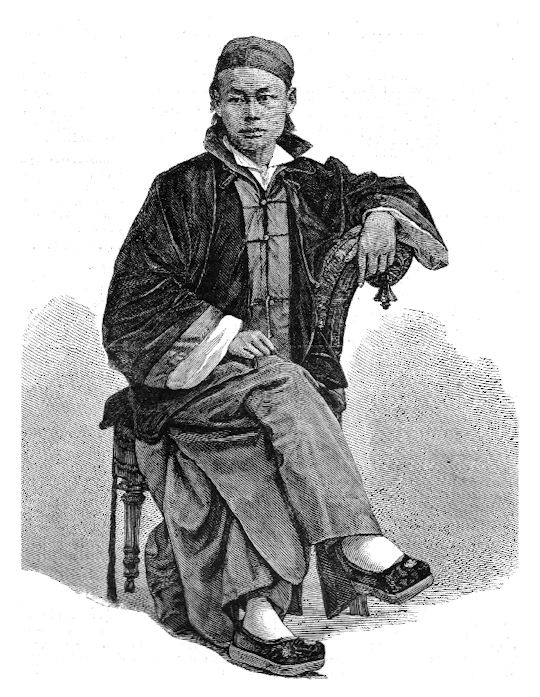
“It is worth noting that the speaker, Wong Chin Foo (1847-1898), was a noted activist for Chinese American civil rights. He was also a former revolutionary, having attempted to overthrow the corrupt Qing government. He fled to the U.S. in 1873, where he established the Chinese Equal Right League, founded a Chinese-language newspaper, crusaded against vice in New York City’s Chinatown, and survived several assassination attempts by gangsters. At one point, he challenged the San Francisco anti-Chinese journalist Denis Kearney to a duel. Wong also bought a Chinese theater, established a language school and opened a Confucian temple.”

Chinese temple architecture
“Chinese temple architecture refer to a type of structures used as place of worship of Chinese Buddhism, Taoism or Chinese folk religion/Shenism, where people revere ethnic Chinese gods and ancestors.
Gōng (宫), meaning "palace" is a term used for a templar complex of multiple buildings, while yuàn (院) is a generic term meaning "sanctuary" or "shrine".

See Lung Hing Kee & Co. Chinese Joss House 131 1st Avenue, Portland, OR
“An old name in English for Chinese traditional temples is "joss house".[1] "Joss" is an Anglicized spelling of the Portuguese word for "god", deus. "Joss house" was in common use in English in western North America during frontier times, when joss houses were a common feature of Chinatowns. The name "joss house" describes the environment of worship. Joss sticks, a kind of incense, are burned inside and outside of the house.”




A Husband-Wife Team from San Francisco
“The Harvard anthropologist Frederick Ward Putnam, who was a top Fair official and should have known what he was talking about, described them as
“the most prominent Chinese at the fair.” He wrote that Ah Que had been educated by Presbyterian missionaries in San Francisco and that “she is said to be very popular” in that city. As for Wong Ki, Putnam credits him with being “the architect of the Chinese Building and the decorator and designer of the Joss House.”

“Putnam goes on to say that Wong Ki was “a native of Canton, where he spent his youth in studying the peculiar architecture of his country. Arriving at manhood, he concluded to cast his lot with many of his countrymen in California, and there was successful at his trade and also fortunate in meeting the beautiful Ah Que, who is now his devoted wife.”The problem is that Putnam’s captions contradict other sources. Wong Ki certainly was not the most prominent male Chinese at the Fair. Hong Sling and Gee Wo Chan received more publicity, and leading members of the Moy family were more influential. True, one Wong Kee, said to be the richest man in (the Clark Street) Chinatown, was a financial backer of the Chinese Theater and Joss House.”
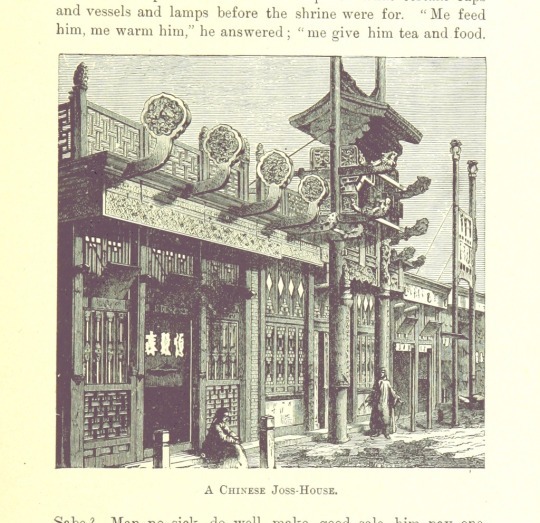
Wong Kai Kee, Artist and Printer, and His Progressive Wife
The Los Angeles Herald (California) March 15, 1896 As Chinamen See Us
“Kai Kee, the distinguished Chinese artist, has made some pictures of New York life for the readers of the Sunday Journal. Kai Kee has established a little studio at No. 1 Doyers street, where he has decided to settle after his fame and reputation at the Chicago world’s fair. He was sent to the exposition from his native land to superintend the construction of the Chinese government buildings at the fair.”
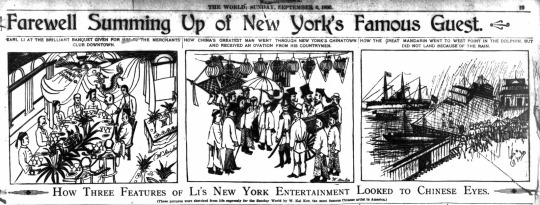
“He was more than pleased when requested to make some pictures for the Journal. Mr. Kai Kee begins his pictorial impressions of New York life with a sketch of the crowd at the entrance to the Brooklyn bridge. Then he was taken to the menagerie in Central park and given an hour’s opportunity to study the monkey pavilion.”




Keye Luke
“Luk Shek Kee (June 18, 1904 – January 12, 1991) was a Chinese-American film and television actor, technical advisor and artist, he was a founding member of the Screen Actors Guild[1][2] He was known for playing Lee Chan, the "Number One Son" in the Charlie Chan films, the original Kato in the 1939–1941 Green Hornet film serials, Brak in the 1960s Space Ghost cartoons, Master Po in the television series Kung Fu, and Mr. Wing in the Gremlins films. He was the first Chinese-American contract player signed by RKO, Universal Pictures and Metro-Goldwyn-Mayer and was one of the most prominent Asian actors of American cinema in the mid-twentieth century.”[3]

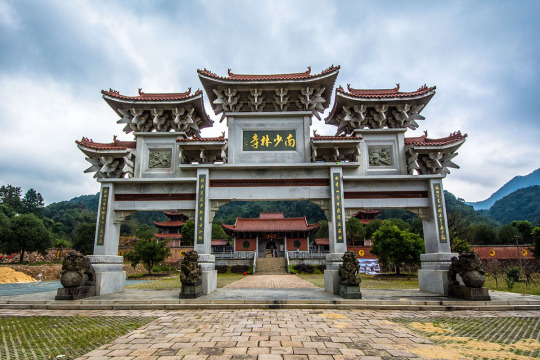
Shaolin Monastary
“There is evidence of Shaolin martial arts being exported to Japan since the 18th century. Martial arts such as Okinawan Shōrin-ryū (小林流) style of Karate, for example, has a name meaning "Shaolin School"[26] and the Japanese Shorinji Kempo (少林寺拳法) is translated as "Shaolin Temple Fist Method". Other similarities can be seen in centuries-old Chinese and Japanese martial arts manuals.”[27]
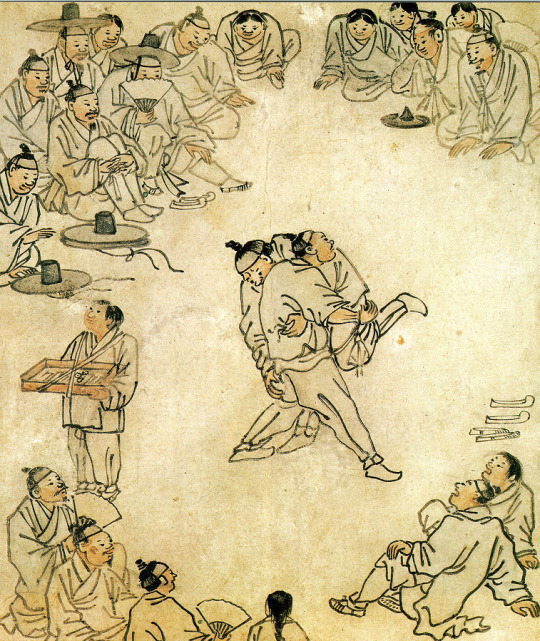

Hapkido
“Hapkido is rendered "합기도" in the native Korean writing system known as hangul, the script used most widely in modern Korea. The art's name can also however be written "合氣道" utilizing the same traditional Chinese characters which would have been used to refer to the Japanese martial art of aikido in the pre-1946 period. The current preference in Japan is for the use of a modern simplified second character; substituting 気 for the earlier, more complex character 氣. The character 合 hap means "coordinated", "joining", or "harmony"; 氣 ki describes internal energy, spirit, strength, or power; and 道 do means "way" or "art", yielding a literal translation of "joining-energy-way". It is most often translated as "the way of coordinating energy", "the way of coordinated power", or "the way of harmony.
Although Japanese Aikido and Korean Hapkido share common technical origins, in time they have become separate and distinct from one another. They differ significantly in philosophy, range of responses, and manner of executing techniques. The fact that they share the same Japanese technical ancestry represented by their respective founders practice of Daitō-ryū Aiki-jūjutsu, and that they share the same Chinese characters, despite 合 being pronounced "ai" in Japanese and "hap" in Korean, has proved problematic in promoting Hapkido internationally as a discipline with its own set of unique characteristics differing from those common to Japanese martial arts.”

Kido Kwon Association

Aikido
“In Japanese Aiki is formed from two kanji:合 - ai - joining氣 - ki - spirit
The kanji for "ai" is made of three radicals, "join", "one" and "mouth". Hence, "ai" symbolizes things coming together, merging. Aiki should not be confused with "wa" which refers to harmony. The kanji for "ki" represents a pot filled with steaming rice and a lid on it. Hence, "ki" symbolizes energy (in the body).
Thus aiki's meaning is to fit, join, or combine energy. However, care must be taken about the absolute meanings of words when discussing concepts derived from other cultures and expressed in different languages. This is particularly true when the words we use today have been derived from symbols, in this case, Japanese kanji, which represent ideas rather than literal translations of the components.”

“Historical use of a term can influence meanings and be passed down by those wishing to illustrate ideas with the best word or phrase available to them. In this way, there may be a divergence of the meaning between arts or schools within the same art. The characters "ai" and "ki" have translations to many different English words.Historically, the principle of aiki would be primarily transmitted orally, as such teachings were often a closely guarded secret. In modern times, the description of the concept varies from the physical [1] to vague and open-ended, or more concerned with spiritual aspects.
Aiki lends its name to various Japanese martial arts most notably aikido and its parent art, Daito-ryu aiki-jujutsu. These arts tend to use the principle of aiki as a core element underpinning the bulk of their techniques. Aiki is an important principle in several other arts such as Kito-ryu and various forms of kenjutsu.[2]
”
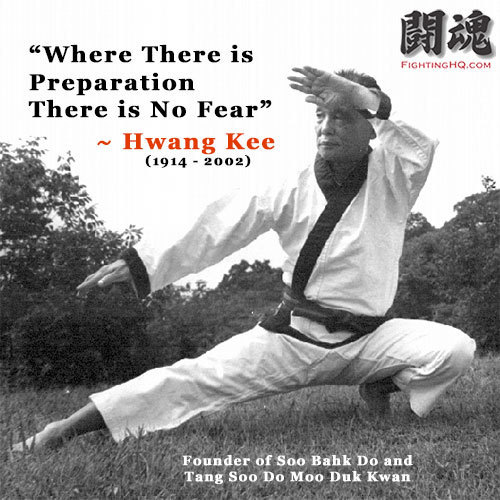
Tang Soo Do
“"Tang Soo Do" (당수도) is the Korean pronunciation of the Hanja 唐手道 (pronounced Táng shǒu dào in Chinese),[2] and translates literally to "The Way of the Tang Hand."The same characters can be pronounced "karate-dō" in Japanese.
Outside of the Far East, the term "Tang Soo Do" has primarily become synonymous with the Korean martial art promoted by grandmaster Hwang Kee.
The history of the Moo Duk Kwan (from which the majority of all modern Tang Soo Do stylists can trace their lineage) can be traced to a single founder: Hwang Kee,[6] who learned Chinese martial arts while in Manchuria.”

”Between 1944 and the Liberation of Korea in 1945, the original schools or kwans of Tang Soo Do were founded in Korea by practitioners who had studied karate and had some exposure to kung-fu. Together, these original five schools and their teachers became the foundation of Tang Soo Do.
In 1964, the Korean Tae Soo Do Association was formed which, in 1965, became the Korean Tae Kwon Do Association...Actor Chuck Norris popularized Tang Soo Do in the Western world, and from it evolved the martial art Chun Kuk Do.”

Famous Veterans: Chuck Norris
“Norris joined the Air Force after high school, with the goal of training in the Security Police in preparation for a career in law enforcement. It was in the Air Force, while stationed in Korea, that Chuck was introduced to martial arts. One night on duty, Norris realized that he couldn't arrest a rowdy drunk without pulling his weapon.
He thus studied Tang Soo Do and Tae Kwan Do, both Korean martial arts, and became the first Westerner to be awarded an eighth-degree Black Belt in Tae Kwan Do. When he returned to the US, Norris served at March Air Force Base, California before being discharged in August 1962. He then worked for Northrop Aviation, but moonlighted as a karate instructor and soon was teaching full-time and running a number of martial arts schools, teaching famous celebrities such as the Osmonds, Priscilla Presley and Steve McQueen. He held the world middleweight karate champion title for six years, and was named Black Beltmagazine's "Fighter of the Year" in 1969, eventually founding 32 martial arts schools.”
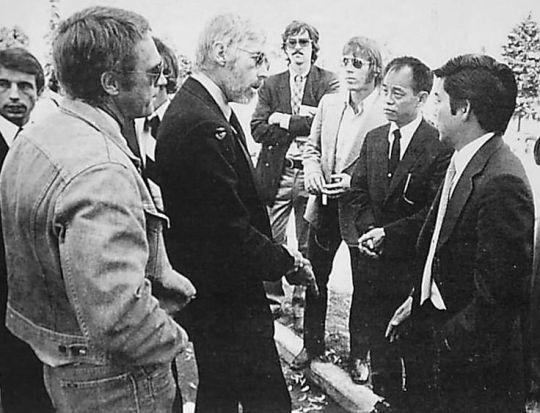
“It was McQueen who encouraged Norris to go into acting. After bit roles, he captured the public's attention with his show-stopping turn as Bruce Lee's martial arts opponent in "Return of the Dragon" (1973). By the late 70s he was popular enough to headline his own movies, and starred in cult classics such as "Good Guys Wear Black," "Delta Force" and "Missing in Action." He currently stars in the popular TV series "Walker, Texas Ranger." Norris' fame grew to the point that fans began making up "Chuck Norris facts" about him (i.e., "Chuck Norris once kicked a horse in the chin. Its descendants today are known as giraffes"), and to this day new "Chuck Norris facts" are still being created, much to the good-natured Norris' amusement.”
(via Famous Veterans: Chuck Norris | Military.com)
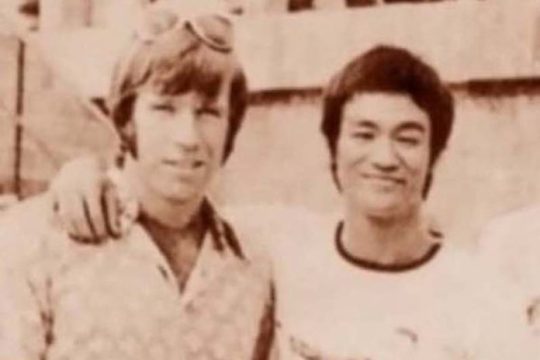
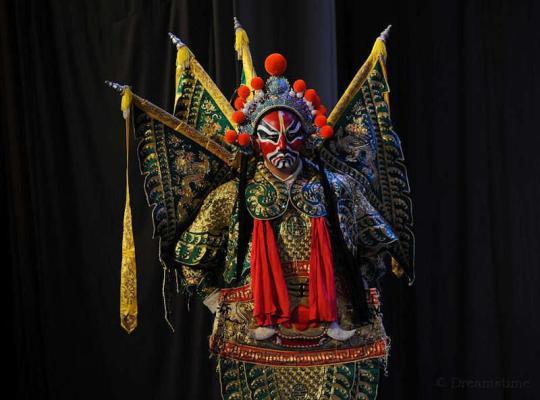
Chinese Opera
“The name 国粹 guó cuì meaning Quintessence of the nation.
Chinese Opera is an art-form that includes many elements: music; dance; acting; mime; comedy; tragedy; acrobatics and martial arts. An aspiring opera performer has to learn to 唱念做打 chàng niàn zuò dǎ sing, talk, act and fight. Over the centuries the art form has become more refined, as in much of Chinese art, the aim is to emulate former masterpieces rather than innovate.
Operas are divided between Wenxi (civilian plays) and Wuxi (military dramas) and between dramas; comedies and farces. The story-lines come from folk tales, legends and classical literature - anything too contemporary was considered politically dangerous. It was forbidden to portray emperors or empresses of the current dynasty.”
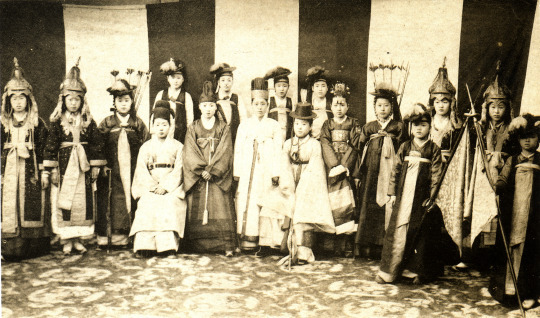
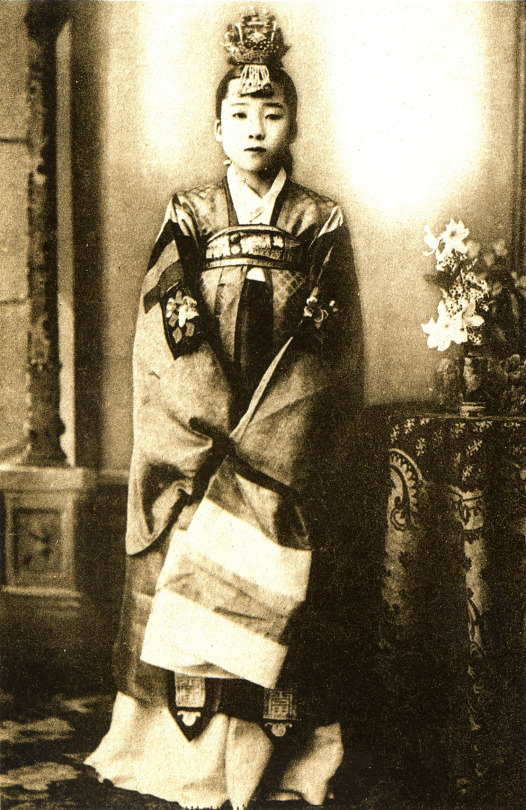
Kisaeng
“Kisaeng (Hangul: 기생; Hanja: 妓生; RR: gisaeng), sometimes called ginyeo (Hangul: 기녀; Hanja: 妓女), were enslaved women who worked to entertain others, such as yangbans and kings, during the Goryeo and Joseon dynasties. They were also courtesans, providing sexual services.[1][2] First appearing in Goryeo, kisaeng were the government's legal entertainers, required to perform various functions for the state. Many were employed at court, but they were also spread throughout the country. They were carefully trained and frequently accomplished in the fine arts, poetry, and prose, although their talents were often ignored due to their inferior social status. Aside from entertainment, these roles included medical care and needlework. Kisaengs play an important role in Korean conceptions of the traditional culture of the Joseon. Some of Korea's oldest and most popular stories, such as Chunhyangjeon, feature kisaeng as heroines.”

”As kisaeng were skilled workers from the beginning, the government took an early interest in ensuring correct education. This first emerged with the establishment of gyobang, training institutes for palace kisaeng during the Goryeo period. During the Joseon period, this became further codified. Instruction focused on music and dance.
In the three-tiered system of later Joseon, more specialized training schools were established for kisaeng of the first tier. The course of study lasted three years and covered poetry, dance, music, and art.[20] The most advanced such school was located in Pyongyang. This system continued well into the Japanese colonial period, during which time the schools training kisaeng were known as gwonbeon (Hangul: 권번).”
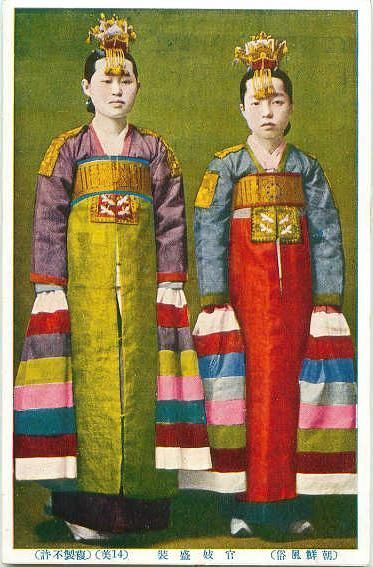
“Most kisaeng had a gibu, or "kisaeng husband", who provided protection and economic support, such as buying them valuable things or granting them social status in return for entertainment.[27] Most gibu were former soldiers, government enforcers, or servants of the royal household.[28] At times, there was friction between would-be customers and possessive gibu, although the gibu was not the kisaeng's husband and had no legal claim to her.[29] The role of the gibu changed over time; at first, many kisaeng in government service had no such patron.[30] However, by the late Joseon dynasty, the gibu system was more or less universal.”[31]
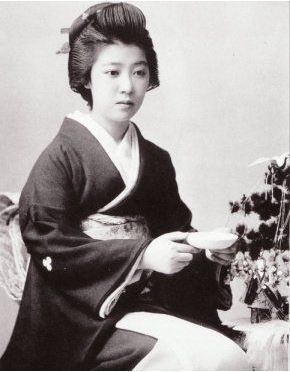
Geisha
“Geisha (芸者) geiko (芸子), or geigi (芸妓) are Japanese women who entertain through performing the ancient traditions of art, dance and singing, and are distinctively characterized by traditional costumes and makeup.Contrary to popular belief, Geisha are not the Eastern equivalent of a prostitute; a misconception originating in the West due to interactions with Oiran Japanese courtesans, whose traditional attire is similar to that of geisha.
The word geisha consists of two kanji, 芸 (Gei) meaning "art" and 者 (Sha) meaning "person" or "doer". The most literal translation of geisha into English would be "artist", "performing artist", or "artisan". Another name for geisha is Geiko (芸妓), which translates specifically as "Woman of Art".
In the early stages of Japanese history, there were female entertainers: Saburuko (serving girls) were mostly wandering girls whose families were displaced from struggles in the late 600s. Some of these saburuko girls sold sexual services, while others with a better education made a living by entertaining at high-class social gatherings. After the imperial court moved the capital to Heian-kyō (Kyoto) in 794 the conditions that would form geisha culture began to emerge, as it became the home of a beauty-obsessed elite.”[6]

“Traditional Japan embraced sexual delights (it is not a Shinto taboo) and men were not constrained to be faithful to their wives.[7] The ideal wife was a modest mother and manager of the home; by Confucian custom love had secondary importance. For sexual enjoyment and romantic attachment, men did not go to their wives, but to courtesans. Walled-in pleasure quarters known as yūkaku (遊廓、遊郭) were built in the 16th century,[8] and in 1617 the shogunate designated "pleasure quarters", outside of which prostitution would be illegal,[9] and within which yūjo ("play women") would be classified and licensed. The highest yūjo class was the geisha's predecessor, called tayuu, a combination of actress and prostitute, originally playing on stages set in the dry Kamo riverbed in Kyoto. They performed erotic dances and skits, and this new art was dubbed kabuku, meaning "to be wild and outrageous". The dances were called "kabuki", and this was the beginning of kabuki theater.”[9]

“These pleasure quarters quickly became glamorous entertainment centers, offering more than sex. The highly accomplished courtesans of these districts entertained their clients by dancing, singing, and playing music. Some were renowned poets and calligraphers. Gradually, they all became specialized and the new profession, purely of entertainment, arose. It was near the turn of the eighteenth century that the first entertainers of the pleasure quarters, called geisha, appeared. The first geishas were men, entertaining customers waiting to see the most popular and gifted courtesans (oiran).[9]
The first woman known to have called herself geisha was a Fukagawa prostitute, in about 1750.[13] She was a skilled singer and shamisen player named Kikuya who was an immediate success, making female geisha extremely popular in 1750s Fukagawa.[14] As they became more widespread throughout the 1760s and 1770s, many began working only as entertainers (rather than prostitutes), often in the same establishments as male geisha.”[15]

“By 1800, being a geisha was considered a female occupation (though there are still a handful of male geisha working today). Eventually, the gaudy Oiran began to fall out of fashion, becoming less popular than the chic ("iki") and modern geisha.[9] By the 1830s, the evolving geisha style was emulated by fashionable women throughout society.[16] There were many different classifications and ranks of geisha. Some women would have sex with their male customers, whereas others would entertain strictly with their art forms.[17]Prostitution in Japan was legal up until 1908, so it was practised throughout Japan.”

“In 1944, the geisha world, including the teahouses, bars and geisha houses, was forced to close, and all employees were put to work in factories. About a year later, they were allowed to reopen. The geisha name also lost some status during this time because prostitutes began referring to themselves as "geisha girls" to American military men.”[18]

”During the period of the Allied occupation of Japan, local women called "Geisha girls" worked as prostitutes. They almost exclusively serviced American GIs stationed in the country, who actually referred to them as "Geesha girls" (a mispronunciation).[73][74] These women dressed in kimono and imitated the look of geisha. Many Americans unfamiliar with the Japanese culture could not tell the difference between legitimate geisha and these costumed performers.[73] Shortly after their arrival in 1945, some occupying American GIs are said to have congregated in Ginza and shouted, "We want geesha girls!"[75]

Kabuki
“Kabuki (歌舞伎) is a classical Japanese dance-drama. Kabuki theatre is known for the stylization of its drama and for the elaborate make-upworn by some of its performers.The individual kanji, from left to right, mean sing (歌), dance (舞), and skill (伎). Kabuki is therefore sometimes translated as "the art of singing and dancing". These are, however, ateji characters which do not reflect actual etymology. The kanji of 'skill' generally refers to a performer in kabuki theatre. Since the word kabuki is believed to derive from the verb kabuku, meaning "to lean" or "to be out of the ordinary", kabuki can be interpreted as "avant-garde" or "bizarre" theatre.[1] The expression kabukimono (歌舞伎者) referred originally to those who were bizarrely dressed. It is often translated into English as "strange things" or "the crazy ones", and referred to the style of dress worn by gangs of samurai.”
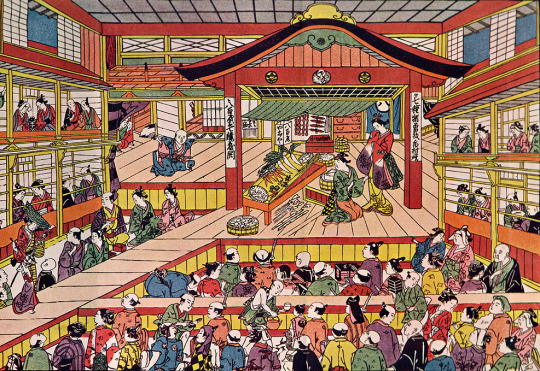

“Wah Kee (华记) is a secret society based in Malaysia and Singapore since the nineteenth century.”

“A Triad is one of many branches of Chinese transnational organized crime syndicates based in China, Hong Kong, Macau and Taiwan and in countries with significant Chinese populations, such as the United States...
The Hong Kong triad is distinct from mainland Chinese criminal organizations.[2] In ancient China, the triad was one of three major secret societies.[3] It established branches in Macau, Hong Kong, Taiwan and Chinese communities overseas.[4] After the establishment of the People's Republic of China, all secret societies were destroyed in mainland China in a series of campaigns organized by Mao Zedong.”
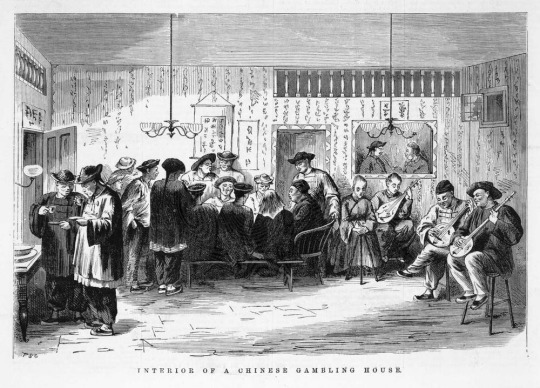
OPIUM IN THE PACIFIC NORTHWEST - 1850′s-1930′s
“Opium use among Chinese immigrants was very widespread, economically important, and -- until 1908-9 -- perfectly legal in most parts of the United States and Canada. The smugglers of opium, most of whom were European-Americans, were criminals, though tolerated and even respected in the Pacific Northwest. Smokers of opium, the majority of whom in those days were Chinese, may have been addicts but were neither criminals nor outcasts.”
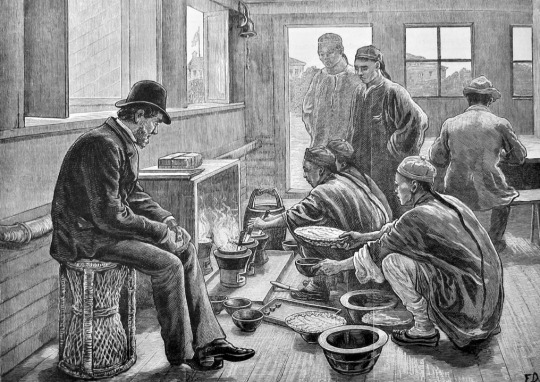
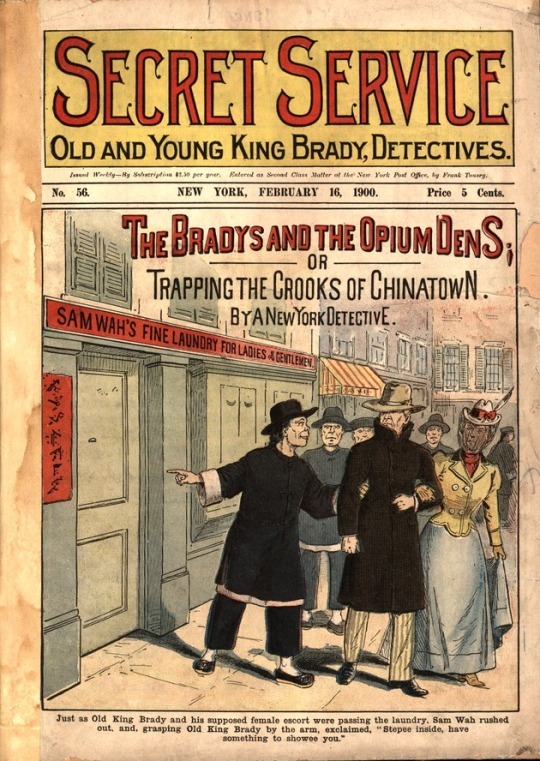
Refining and Packaging Opium for Sale
“Even more prestigious were Indian opiums refined in Hong Kong, where the water and master refiners were thought to be the best in the world. This refining process does concern us, because the end result, opium "boiled" or "cooked" and packaged by a small number of Hong Kong firms, had a central influence on the economies and lifestyles of many North American Chinese in the late 19th and early 20th centuries.”

Victoria: The Largest Opium Making Center Outside Asia
“Opium refining was not confined to eastern Asia. Among the places where it was done on a large scale (but reputedly with less concern for quality) were Victoria, Vancouver, and New Westminster in British Columbia, ideally located for wholesaling (or smuggling) their products to the United States.
Opium refining seems to have gotten its real start in Canada after 1880, when a new U.S. law restricted opium refining to American citizens (Culin 1891: 499). This caused would-be Chinese refiners, none of whom by law could become U.S. citizens, to move across the border to Victoria, which then held the largest Chinese community in Canada.”
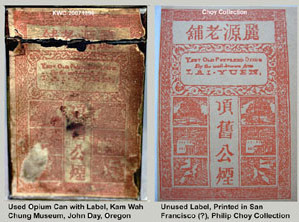
Opium Brand Names
“None except Sing Wo Chan, a branch of Macao’s immensely wealthy Sing Wo Co., seem to have specialized in opium alone. The rest had multiple lines of business. Besides opium, they were also importers and sellers of textiles, teas, groceries, and other Chinese goods, and some were labor contractors as well...None are known to have stayed in the opium business after 1908.
The names and stamped seals of Hong Kong opium producers were among the first internationally recognized brand names in the history of Asia. From the 1870s onward they were recognized in North America as well...the most favored brands of opium, Fook Lung and Lai Yuen, along with the less popular Ping Kee brand, were produced by the Yen Wo 仁和 syndicate of merchants from Dongguan, a Cantonese-speaking district southeast of Canton.”

Opium cans or "tins"
“The size of opium cans was standardized. Each held exactly 5 Chinese ounces (= liang or taels) of refined opium, about 6 1/2 ounces avoirdupois but usually calculated as a half-pound by American newspapers and the Customs Service. In the United States in 1891, the wholesale price ranged from $6.80 (for Victoria opium) to $9.00 (for the best Hong Kong opium.”

**Counterfeiting Hong Kong Opium **
“In 1882, a fascinating legal case got under way in San Francisco. The defendant was the U. S. government, which had seized 3,880 5-tael cans of opium, all bearing either “Lai Yuen” or “Fook Loong” labels, from a local man named Kennedy. He claimed that he had been shipping the opium, perfectly legally, to Hawaii, when it was seized. Maintaining that he had not broken any law, he wanted his opium--$25,000 worth--back.
Kennedy had ordered the opium, 4000 taels (2000 pounds) in all, from Choy Suey and Choy Lum, owners of Tai Hung & Co. at 1014 Dupont [Grant] Street in San Francisco. They in turn had purchased the opium, already refined, from firms named Hop Kee and Tuck Kee & Co., also in San Francisco. Until 1880, it was testified,Hop Kee had operated a “manufactory” of prepared (refined) opium in Newark, New Jersey. At Kennedy’s instructions, the Choys repackaged the Hop Kee/Tuck Kee opium to look like the Lai Yuen and Fook Long brands.
For the moment, it is enough to say that almost all of the activities described above were legal, in American if not Hawaiian law, that the witnesses, Chinese and European, testified freely, and that the only person involved who was in legal trouble was Kennedy. And even he was in no danger of prison: the issue at hand was simply whether Customs officials could keep the opium or whether they would have to give it back.”
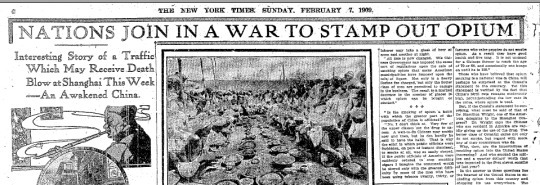
Turning Point: the 1909 Shanghai Conference
“The international conference held in Shanghai in February 1909 was heralded as (and may have really been) the single most important event in the history of effforts to ban the international trade in opium. Held in Shanghai to acknowledge China's spectacularly successful, if short-lived, efforts to suppress narcotics use, especially the smoking of opium, the conference brought all of the major national players to the same table and, in the glare of unprecedented international publicity, forced them to commit to eliminating the opium trade and opium use.
One more or less direct effect was to convince the United States Congress that the time had come to enact a serious anti-opium law. The one passed that year became the foundation of all subsequent anti-narcotics efforts in this country and helped to convince other countries that similar laws were imperative.”

Curing Addicts and Outlawing the Opium Trade: The Missionary Connection
“In the English-speaking world, much of the pressure to ban opium and to cure addicts, sometimes through incarceration or worse, came from missionaries working in China and among overseas Chinese. The most radical anti-opium missionaries tended to be British, American, or Canadian Protestants as well as their Chinese converts, some of whom...also became religious professionals...For now it is enough to note that there was a strong religious element in anti-opium campaigns, that intolerance and righteous exaggeration were the inevitable result, and that in spite of this, Chinese everywhere owe a debt to Christian churches of the late 19th-early 20th centuries for supporting Chinese efforts to outlaw opium use and for campaigning successfully in the West to end the legal international trade in opium.”
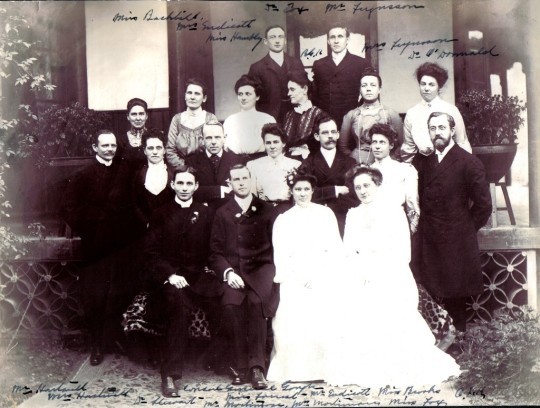
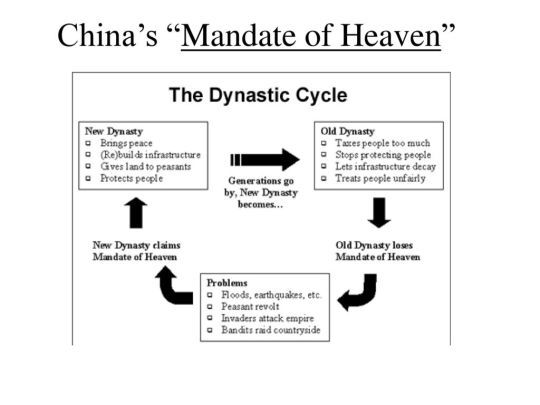

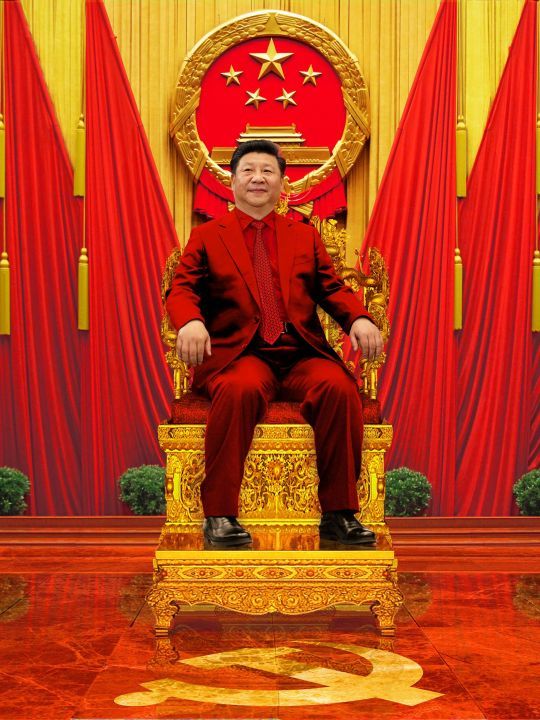
#taipingrevolt#boxerrebellion#mandateofheaven#8banners#tangsoodo#martialarts#kungfu#shaolintemple#josshouse#chewkeejossstore#courttranslator#puplfiction#journalism#tonggangwars#wahkeelaundry#opiumden#dynasticcycle#rise&fallofcommunism
2 notes
·
View notes
Text
Washington Post: Church Spends Millions On Its Image (1984)
By Michael Isikoff September 17, 1984
The Unification Church of the Rev. Sun Myung Moon is spending millions of dollars a year on a broad range of cultural and political programs, including academic conferences, foreign trips for journalists and conservative lobbying activities, that are designed to improve the church's image with the American public and promote an ideological "world war" against communism.
The church also is using its vast financial resources to foster a budding alliance with the New Right and conservative political leaders. In May, a church political group called the Freedom Leadership Foundation paid for four Republican Senate staff members -- including aides to Sens. Steve Symms (R-Idaho), Robert W. Kasten Jr. (R-Wis.) and William L. Armstrong (R-Colo.) -- to fly to Central America where they met with government leaders and U.S. Embassy officials in Honduras and Guatemala and joined the official U.S. observer delegation to the Salvadoran election.
Another church political arm, Causa International, which preaches a philosophy it calls "God-ism," has been spending millions of dollars on expense-paid seminars and conferences for Senate staffers, Hispanic Americans and conservative activists. It also has contributed $500,000 to finance an anticommunist lobbying campaign headed by John T. (Terry) Dolan, chairman of the National Conservative Political Action Committee (NCPAC).
These activities are described by Unification Church officials as part of a much broader, and sometimes more subtle, program to influence American politics and culture. This year, the church has spent $15 million to launch a national edition of its Washington Times newspaper and earmarked $5 million over the next five years for a new academic-oriented publishing company called Paragon House that has ambitious plans to publish up to 100 books a year.
The church also is spending $1.5 million a year on a new local think tank, the Washington Institute for Values in Public Policy, that is underwriting conservative-oriented research and seminars at Stanford University, the University of Chicago, the Institute for Energy Analysis in Oak Ridge, Tenn., and other institutions.
"We're trying to combat communism and we're trying to uphold traditional Judeo-Christian values," said James Gavin, special assistant to Col. Bo Hi Pak, Moon's top deputy who serves as chairman of Causa International and News World Communications Inc., parent company of The Times. "The Washington Times is standing up for those values and fighting anything that would tear them down. Causa is doing the same thing, by explaining what the enemy is trying to do."
As a result of these activities, the church is increasingly developing financial and professional relationships with prominent conservative academics, religious leaders, journalists and political leaders. Causa's domestic affiliate, Causa USA, has recruited an advisory board that includes retired Army Lt. Gen. Daniel O. Graham, former U.S. ambassador to Honduras Phillip Sanchez and Dolan, who said last week that he was proud of his association with the group.
"I talk to Col. Pak regularly," Dolan said.
The Washington Institute has a blue-ribbon board of trustees that includes two former members of Congress, professors from Columbia University and the University of Maryland and David Carliner, former general counsel of the American Civil Liberties Union, who has represented Moon on immigration matters.
At a recent church-funded academic conference in Washington, more than 240 scholars, including professors from Harvard, Princeton, Stanford, University of Michigan and the Sorbonne in Paris, gave a standing ovation to Hak Ja Han, Moon's wife.
In addition, church officials say they are providing large amounts of humanitarian aid to the needy. The church-financed International Relief Friendship Foundation recently shipped 1,000 pounds of clothing, nearly seven tons of food and medical supplies to Miskito Indian refugees in the jungles of Honduras, according to Joy Morrow, the foundation's Washington coordinator.
But some conservative leaders warn that the growing relationship between the church and the New Right will provoke a fierce public backlash that will damage the conservative cause.
"The Unification Church is trying to buy its way into the conservative movement," charged Neal B. Blair, president of Free the Eagle, a Washington-based conservative lobbying group. "Moon says he's the son of God and the savior of the world. . . . It's frightening. Seldom have we had a group come into this country before and have this much money to spend."
This is not the first time that the church's political activities have generated controversy. In the 1970s, church officials organized prayer breakfasts and rallies in support of President Richard M. Nixon, dispatched young female members to infiltrate congressional offices and had extensive "operational ties" with the Korean Central Intelligence Agency as part of the agency's efforts to influence U.S. officials, according to a 1978 report by a House subcommittee.
Those allegations, most of which were strenuously denied by church officials at the time, continue to trouble their more recent efforts. When the California Republican Youth Caucus accepted $5,000 from Causa last year to help underwrite the cost of an organizing conference, party officials were deluged with protests and the Los Angeles County party worker who had solicited the contribution was fired.
Similarly, a number of influential conservative leaders have steered clear or dropped out of Dolan's political lobby, titled CALL, or the Conservative Alliance, when they learned it had taken money from Causa. A foreign policy aide to Sen. Jesse Helms (R-N.C.) was refused permission to participate in the Senate staff trip to Central America because of the Unification Church financing, Senate sources said.
Samuel Routson, an aide to Symms who organized the trip, said the offer to finance the group's plane fare and other expenses was made by church official Joseph Tully, who also is executive director of Causa USA. Routson said all the aides on the trip were aware of the funding source and that the financing was cleared with the Senate Select Committee on Ethics, which, according to a spokesman, permits any outside group to pay for staff travel.
"You'd have to go a long way to find anything improper about this," Routson said. "This is something that has been done by numerous other organizations."
But unlike many other organizations, Causa conducts seminars and conferences behind closed doors, refusing permission for members of the public or the press to attend. Tully said this is because "we want to make sure that people who come to the conferences will spend their time on the material . . . . We're not interested in opening them up so that people can do their own thing."
After repeated requests, a Causa USA official said a Washington Post reporter could attend a recent Causa conference for Senate administrative assistants at the Hyatt Regency Hotel on Capitol Hill. The next day, Causa official Lenny Brown called back to tell the reporter he was "disinvited" because virtually all the participants had canceled when informed that a reporter would be present.
Paradoxically, the church's efforts have been helped by the U.S. government's tax case against Moon. Last year, the church retained the Los Angeles public relations firm of Madison Fielding and Harvard Law School professor Lawrence Tribe to spearhead a legal and political lobbying campaign aimed at persuading the Justice Department to ask the Supreme Court to overturn Moon's conviction.
A coalition that included civil libertarians, religious fundamentalists and black Baptist ministers, such as civil rights leader Rev. Joseph Lowery, participated in the campaign, joining coalitions and attending church-financed news conferences and rallies where Moon was depicted as a martyr for religious liberty.
The campaign to identify Moon with the religious liberty issue has done more to enhance his image than any other event since the South Korean evangelist came to America in 1971, church leaders have said. In addition, the church's alliance with these groups is continuing. Last month, dozens of southern black ministers were flown to Washington for a weeklong conference on the religious freedom issue at Causa's headquarters here.
"This kind of activity with Christian clergy would have been unthinkable six months ago," said Tyler Hendricks, a Unification Church theologian who helped conduct the conference. "They realize we're in a common situation as Christian people."
Unification Church officials, including Moon, have said that much of the funding for their operations here is coming from "overseas." An article in yesterday's editions of The Washington Post reported that two former church officials in Japan said the church has sent more than $800 million into the United States over the past nine years years from a Tokyo business operation that sells marble vases, miniature treasure pagodas and other religious icons.
These funds have supported a vast array of church businesses here, the most important of which is The Times, the former officials said. Moon has invested more than $150 million in the newspaper. The paper grossed about $3.4 million in its last fiscal year, according to James Whelan, the paper's former editor and publisher.
But some portion of the church's political and cultural activities also is financed by U.S. church fund-raising, including mobile fund-raising teams (MFTs), small groups of church members who travel by van from city to city selling flowers imported from South America, boxes of candy and inexpensive trinkets, according to a number of ex-church members. Such fund-raisers are expected to bring in at least $100 per day, but can sometimes collect as much as $1,000 on weekends, they said.
Mose Durst, president of the Unification Church, said the church raises "more than $20 million" in the United States annually and that such activities are considered an important part of church life. "For us, the basic point of fund-raising is that it teaches you to love other people," said church spokesman Joy Garrett.
Former church members say they are expected to meet demanding fund-raising goals. Shoshee Larkey, 27, said she worked on a four- to six-person team in the San Francisco Bay area during 1982 and 1983, spending most of her time peddling roses in bars, restaurants and factories and giving all proceeds to the church. Each member of the team set a personal goal which, in her case, was to earn $200 a day. Some members fasted when they failed to reach their goal, she said.
"The more money you made, the more dedicated a church member you were considered, the more valuable a part of the movement you were," Larkey said. "The less money you made, the more time you spent repenting and praying for your failure to fulfill your mission."
These revenues, supplemented by the contributions from Japan and other branches of the international church, have financed a large number of church activities that extend beyond religious proselytizing:
*A Moon organization called the World Media Association has staged a series of all-expense-paid foreign trips for journalists, such as one to a conference in Seoul two years ago that featured talks by National Review publisher William Rusher, the chairman of the conference, and Accuracy in Media Chairman Reed Irvine.
In April, the group took about 100 journalists, including about 30 American editors and reporters from mostly small- and medium-sized newspapers such as the Palm Beach (Fla.) Post and the Kokomo (Ind.) Tribune, on a two-week "fact-finding" trip to Asia. At church expense, the journalists met Thai Prime Minister Prem Tinsulanond in Bangkok, inspected refugee camps on the Cambodian border, toured the Demilitarized Zone in South Korea and received a group interview with Japanese Prime Minister Yasuhiro Nakasone in Tokyo.
The trip cost the association about $500,000, approximately the same amount the group will spend later this year for its annual World Media Conference in Tokyo that will be chaired by Douglas MacArthur II. He is a former U.S. ambassador to Japan and a member of the editorial advisory board of The Washington Times, according to Larry R. Moffitt, executive director of the World Media Association.
*An estimated 5,000 scholars, including more than two dozen Nobel laureates, have accepted expense-paid trips to academic conferences around the world held by the International Conference of the Unity of Sciences (ICUS) and the Professors World Peace Academy, two offshoots of the Moon-financed International Cultural Foundation (ICF), a New York-based umbrella organization for church academic programs.
This year's 13th annual ICUS conference, with the theme "Absolute Values and The New Cultural Revolution," was held over the Labor Day weekend at the new J.W. Marriott Hotel in Washington and attracted 240 participants from 46 countries, including John Lombardi, dean of international programs at Indiana University; Claude A. Villee, a Harvard Medical School biochemist; Morton Kaplan, a University of Chicago political scientist, and Eugene P. Wigner, a Princeton University physicist and Nobel laureate who, at an ICUS conference two years ago, received a $200,000 "founder's award" from Moon.
The conferences are described as academic affairs devoid of religious themes, although Moon selects the conference topics and, until this year, delivered a "founder's address" to the academic audience. In addition, about 40 of the scholars will receive speaking fees totaling $1,000 each -- $500 for delivering a paper and another $500 when the papers are published in church-sponsored publications of the ICUS proceedings. Committee and conference chairman receive additional fees.
In the past, Moon has used the founder's address to denounce communist efforts to discredit him and, twice, to sing a Korean folk song. In Moon's absence last week, the academics listened to Kaplan praise Moon as an important world leader.
"I had occasion to visit Rev. Moon in prison recently . . . and it was the strangest experience," said Kaplan, one of five professors who serve as $5,000-a-year "senior consultants" to the ICF. "He was interested only in how the world could be made a better place . . . . His heart and his mind were filled only with what he regards as his mission. He had not time for any personal concerns."
The participation of prominent scholars at the conferences has provoked a debate over academic ethics. Although many participants make a point of saying they do not endorse the theology of the Unification Church, critics note that the church has in the past used photographs and films of the scholars, frequently shaking hands with or standing side-by-side with Moon, in promotional literature. The presence of distinguished academics at church-sponsored gatherings gives Moon the aura of power and influence he seeks, the critics said.
"These academics are selling themselves," charged Ann Lindgren, president of the Citizens Freedom Foundation, an anti-cult group. "All these conferences are taped and those materials are used in recruiting programs all over the world. They say, 'Here's professor So-and-So from Yale University' and that makes a big impression on young people. It adds credibility to their organization."
Irving Horowitz, a professor of sociology at Rutgers University and another critic of academic participation in the events, calls the ICUS conferences "one of the great brilliant marketing strategies in the history of religion. They know how to get them academics ; they know how to market them."
But scholars who attend vigorously cite their "academic freedom" to do so and praise the interdisciplinary nature of the events. "No other organization has the scope or range of these conferences," Kaplan said. "Is the church-sponsorship evident? The answer is clearly yes . . . . But the academics don't write their papers with the church in mind."
"I go there with a perfectly clear conscience because they are intellectually worthwhile," Harvard biochemist Villee said. "I don't pay any attention at all to whatever religious aspects there are of Mr. Moon's operations. I know nothing about them . . . . The Unification Church stays so far in the background you don't even know they're there," he said.
Some scholars also have joined church-sponsored protests and rallies that have attacked the Justice Department for its tax-evasion case against Moon. In one such rally in May at the Hyatt Regency Hotel, Richard Rubenstein, a professor of religious studies at Florida State University who also is president of the Washington Institute and a senior consultant to the ICF, hailed Moon as "one of the most important religious figures of the 20th century" and reminded his audience that Moon "is not the only convicted felon in the history of religion."
A similar debate over ethics has surrounded the participation of journalists in the World Media Conference, particularly in light of the church's advocacy role on political issues.
Tom Kelly, editor of the Palm Beach Post, a newspaper owned by Cox Enterprises Inc., who went on the April trip to Asia, said that on the first day in Bangkok, Causa officials launched a series of lectures about the dangers of communism and the group's alternative philosophy, "God-ism."
The lectures "totally turned off about 90 percent of the group," said Kelly, but he added that "there was no great proselytizing" during the rest of the trip except for a breakfast meeting that he and others had with with Col. Pak in Tokyo. On the whole, he said, the trip was "quite well done" and professionally useful. "I figured this was the only way I would get to Asia," Kelly said.
After he returned to the United States, Kelly said he wrote a five-part series for the Cox chain about his travels, identifying his trip sponsor as the "publishers of The Washington Times." Since then, a Cox official in Atlanta said the company has imposed a policy that would prohibit employes from taking such trips in the future.
The premise behind these and other church-sponsored activities is an apocalyptic world view in which followers of Moon are instruments of God locked in a "third world war" against international communism, according to church literature and statements by church officials.
Pak, a former South Korean military attache who oversees the church's political activities, declined to talk to a reporter for this article. But Pak did offer a rare public glimpse of his view of the church's mission in an interview with Ken Ellis, a producer for KQED-TV in San Francisco, during the media trip to Asia.
"We want to awaken the world," said Pak, according to a transcript of the interview. "We want to turn the tide so that this totalitarian, godless system must go . . . .
"It is a total war," Pak added. "Basically a war of ideas. War of minds. The battlefield of the human mind. This is where the battle is fought. So in this war, the entire things will be mobilized: political means, social means, economical means and propagandistic means . . . . The media organization that we are setting up wants to be utilized as an instrument, an instrument of our cause, instrument of our purpose . . . the instrument to be used by God."
#James Whelan#Bo Hi Pak#unification church#sun myung moon#CAUSA#godism#anti-communism#ideology#politics
0 notes
Text
September 19, 2017
Ethereum News and Links
Toshi (formerly known as Token) is now live on main net. As early technology, Ethereum needs to progress in scalability, privacy and usability. Ethereum needs apps like Toshi, Status, Leth, imToken, etc to make Ethereum usable by non-nerds. You can message me @EvanVanNess and make sure to rate Toshi’s Week In Ethereum app.
MicroRaiden: "off-the-shelf micropayment solution." Live on Kovan, main net "very soon."
Fizzy: Largest insurance company in the world copies Etherisc's flight delay insurance, currently live for flights between Paris and the US. (Oracle problems?)
Cosmos published Shanghai Accord - Ethereum Scaling Agreement, which is mostly Vitalik expressing support for Cosmos building things that make Ethereum more scalable by moving stuff to another chain through interoperability
Vitalik: "This is the real "ethereum scaling roadmap" - it's a combination of continued improvements to increase the scalability of the base chain, together with the ability for anyone to make their own system that hooks into ethereum that provides its own scalability as well as possibly other properties that the base chain does not."
Protocol
Alex Van de Sande explains what's in the Byzantium hard fork
Ropsten testnet successfully hardforked to Byzantium. I've seen talk about whether people will keep the old chain alive -- but the old chain will be in ice age, so you'd actually have to hard fork the old chain in order to keep it alive. Seems tough from a marketing standpoint.
Bug bounty doubled for issues relating to the upcoming Byzantium fork
Byzantium releases: Geth v1.7 and Parity v1.7.2 release
Token Contracts on Plasma or: a Tale about Local and Global Invariants
Diving into the EVM, pt 4: Deciphering a method call
Zero-knowledge proofs, Zcash, and Ethereum
ZCash's "groundbreaking performance improvements" for zk-SNARKs
Christian Reitwießner: testnet just verified a zcash transaction
Stuff for developers
Implementing the EVM in Clojure
Building a table of token holders using Quickbooks
How to read Ethereum contract storage
Maurelian: The use of revert(), assert(), and require() in Solidity, and the new REVERT opcode in the EVM
Ecosystem
Ethereum authenticated VPN service
Matrix & Riot for Crypto-Communities
How MetaCert is working to make Slack usable by crypto projects again
Orinoco: Understanding ERC-20 token contracts
China: it seems as if blockchain crackdown is more serious than expected. Exchanges are closing and perhaps exchange operators have been told to stay in China?
Explaining Raiden without using the bar tab analogy
Oraclize and Eidoo are semi-merging
ConsenSys is hosting the first global MBA Blockchain Venture Competition
Mike Goldin: Token Curated Registries
Vitalik: A Prehistory of the Ethereum Protocol
Project Announcements
Props Project by the YouNow team. Video announcement. Whitepaper
EthRPS: play rock-paper-scissors for money
Leverj: futures exchange with margin, supported by ConsenSys
FansUnited: sports betting
GitToken: earn tokens for your pull requests
Ocean: Trent McConaghy's decentralized data marketplace protocol
Project Updates
Augur's Solidity migration is complete
The 0cean's "high performance funnel" order book
ICONOMI September AMA
More on Legacy's vision of transfering your memories and belongings after death
Secure & fair shuffling of the deck on Virtue Poker
The Brave browser now blocks backgroun coin mining scripts
Decentraland's first LAND sale
Decentraland community whitelist is ongoing
Interviews and Talks
Gavin speaks: Interview with Ethereum co-founder Gavin Wood
More Parity: Jutta Steiner on Governing the Future podcast
Q&A with Luis Cuende of Aragon
Status Q&A with Stani Kulechov from ETHLend
William Mougayar talk at ICO Summit
Brendan Eich podcast interview with Aaron Watson
Cofound.it's Daniel Zakrisson and David Szabo on trends at ICO Summit
Doug Petkanics from LivePeer is my guest for episode #2 for An Ethereum Podcast. We get deep into the magic of decentralized video.
San Fran Ethereum meetup: Jun from OMG, Vitalik, and Joseph Poon. Also, Sergey Nazarov on ChainLink
Silicon Valley meetup: Vitalik Buterin, Balaji Srinivasan, Joseph Poon, and Dan Boneh
Naval interviews Vitalik at TechCrunch Disrupt. Vitalik is optimistic we can scale to Visa-like levels in a few years.
Token Sales
Grid+: The P2P grid we want, and why we need a blockchain
Seems like Etherisc wins at every blockchain startup competition
Livepeer for beginners
This week in undisclosed celebrity ICO shilling: Jamie Foxx
Request Network token sale details. Yellow paper.
General
Someone wrote comedic fiction about being the hacker of the Parity multi-sig wallet
People keep sharing this image of JPMorgan being one of the biggest buyers of Bitcoin after Jamie Dimon's fraud comments. But most likely this is just JPMorgan's brokerage activity, not them trading their own account.
Trusted IoT Alliance: "set the standard for an open source blockchain protocol to support IoT"
EY rigged their coffee maker with a Raspberry Pi to accept payment using LETH
People widely shared a TechCrunch article due to headline of "SEC show support for ICOs" but it was just a weakly supported opinion piece
Dates of note
From Token Sale Calendar: (didn't have time for comprehensive update for the newsletter before I had to get on my flight, please click the link for an updated list of sales)
Upcoming token sale start dates:
September 21 – Digital Asset Power Play (Cofound.it Priority Pass presale: Sep 19)
September 21 – Opakeco
September 25 – EthLend
September 25 – Jibrel Network
September 28 – Doc.ai
September 29 – Snip
September 29 – Customizable Basic Income
September 29 – Assistive Reality
October 1 – Hirematch
October 1 – Etherparty (pre-sale ongoing)
October 2 – Rhea
October 2 – WandX
October 2 – Horizon State
October 3 – Enjin (ongoing pre-sale)
October 3 – Snov
October 10 – Swap
October 10 – Notary Platform
October 15 – Paypie
October 30 – Grid+
November 1 – Winding Tree
November 1 – ScriptDrop
Ongoing token sales:
Streamr
Privatix
MatchPay
Gimli
Databroker DAO
Circles
Relest
Wolk
Air Token
Spheris
Aeron (ongoing pre-sale)
Maecenas
Kin (must have already registered)
Bitjob
LookRev
Matryx
Atlant
Avalon
Payfair
HelloGold
REAL
Eventchain
Authoreon
Magos
PowerLedger
Vibehub
Paragon
Agor
Propy
Umbrella Coin
Want to be included? If you are building your project on Ethereum, email weekinethereum @ gmail [period] com with 1) your URL, 2) sale date and 3) a brief but convincing description of how you are using Ethereum, preferably with a link to your Github repo. Listings are free. But please make sure to follow those instructions. If you don’t follow the instructions, you likely won’t get a response.
WARNING: list may include or even likely includes scams and quasi-scams. Do your own research and due diligence before putting value at risk.
[I aim for a relatively comprehensive list of Ethereum sales, but make no warranty as to even whether they are legit; as such, I thus likewise warrant nothing about whether any will produce a satisfactory return. I have passed the CFA exams, but this is not investment advice. If you're interested in what I do, you can find my somewhat out-of-date investing thesis and token sale appreciation strategies in previous newsletters.]
Every week I still get emails saying, "you joined ConsenSys?" So this section stays.
If you emailed my Ticketleap email address in the last 30 days or so, then I likely didn't get it. If you were waiting on a response from an email you sent there, I suggest you re-send to weekinethereum @ gmail [period] com.
I've joined ConsenSys. Here's a logo to draw your eye in case you were going to skip over this section:

My charge from Joe Lubin is pretty similar to what Status has told me: keep telling the truth and covering the space as objectively as I can.
Permalink
I measure the success of each issue by how much it gets upvoted and shared. This is the link: http://www.weekinethereum.com/post/165538198138/september-19-2017 Follow me on Twitter? @evan_van_ness
This newsletter is supported by Status.im and ConsenSys (have you seen that we're hiring?). But in case you still want to send Ether or tokens: 0x96d4F0E75ae86e4c46cD8e9D4AE2F2309bD6Ec45
Sign up to receive the weekly email.
7 notes
·
View notes
Text
Dragon Age Dual AU Worldstate
Long post, all under the cut.
Edits may be made as details are added or changed.
(I typed this the best I could remember us discussing the details a while ago.)
Shared with: @bxtgrl (Nat), @jellyfishlovesloki
Dragon Age Origins
Heroes of Ferelden: Namera Cousland (sword/shield warrior, Alistair romance), and Piras Surana (mage, Zevran romance).
Companion OCs: Sylvas Mahariel (dual-wielding/archery rogue, Tamlen Rendlin romance), Sarabeth Tabris (archery rogue, Leliana romance), Christian Amell (mage, Morrigan romance), Rendlin Amell (sword/shield warrior, Sylvas romance), Paige Brosca (dual-wielding rogue, no romance), Atlen Mahariel (dual-wielding rogue, Jowan romance), and Noah Talbot (two-handed warrior, Anora romance).
All companions except for Loghain are recruited.
Companion decisions: Returned Sten’s sword, defeated Flemeth for her grimoire, sent Marjolaine away, and helped Alistair find Goldanna.
Namera has a mabari, Konroy, and Piras got a mabari after Ostagar, Sammy.
Broken Circle: Sided with the mages, gained some Templar supporters, and managed to save First Enchanter Irving.
The Arl of Redcliffe: Helped Redcliffe prepare and fight, Piras used lyrium and the help of Circle mages to fight the demon in the Fade, Connor alive, not possessed, and Piras and some companions helped Jowan escape at night (Sylvas directed him to Atlen for protection).
The Urn of Sacred Ashes: Urn wasn’t poisoned, and word about its discovery eventually got out.
Nature of the Beast: Sylvas helped Namera and Piras broker peace.
Paragon of Her Kind: Rendlin had a son with Mardy, restored Mardy’s son’s birthright, Dagna left to study, defeated Branka and destroyed the Anvil of the Void, Namera supported Harrowmont, Piras supported Bhelen, and the choice was ultimately left up to Rendlin who surprised everyone by choosing Bhelen.
Stone Prisoner DLC: Matthias and Amalia both alive, and neither are possessed.
Warden’s Keep DLC: Piras gained the Power of Blood, Sophia killed, and Avernus allowed to continue research under more ethical restraints.
Denerim: Helped Sarabeth figure out and stop the city elves from disappearing, rescued Anora, and Namera killed Howe in combat, avenging her family.
Landsmeet: Loghain killed by Alistair, Alistair became King of Ferelden, and later married Namera, making her Queen of Ferelden.
The Battle of Denerim: Alistair took part in the Dark Ritual with Morrigan, only Grey Warden to die was Riordan, and Namera and Piras killed the Archdemon together.
New Grey Wardens: Sylvas, Christian, Rendlin, Paige, Atlen, Noah, and Jowan joined the Grey Wardens after the Battle of Denerim. Sarabeth joined the Grey Wardens in the beginning of Awakening.
Namera and Sarabeth belong to @bxtgrl.
Piras, Sylvas, Christian, Rendlin, Paige, Atlen, and Noah belong to @magicrobins.
The Golems of Amgarrak DLC: Namera and Piras helped Jerrik, however they both vocally objected to the idea of bringing back the creation of golems.
Witch Hunt DLC: Christian follows Morrigan through the Eluvian.
Dragon Age Awakening DLC
New companion OCs: Halin Andras (mage, one-sided Nathaniel romance), Hannah Caron (two-handed warrior, Jaden romance), and Jaden Kader (archery rogue, Hannah romance). Companion OCs from Origins returned with Namera and Piras, as well as Jowan, a canon character.
Piras is named Arl of Amaranthine.
All companions recruited and joined the Grey Wardens.
Oghren and Felsi reunited.
Both the Keep and Amaranthine were successfully protected after hard battles.
The only casualty of the battles: Justice was “killed” when Kristoff’s head is chopped off while defending Vigil’s Keep.
Piras and Namera side with the Architect against the Broodmother and allow him to live.
Zevran eventually returns to Amaranthine, and he and Piras marry at Vigil’s Keep.
Majority of companions stay with the Grey Wardens, though Velanna eventually leaves after believing she saw her sister.
Halin Andras, Hannah Caron, and Jaden Kader belong to @magicrobins
Dragon Age II*
*The timeline of DA2 is being edited to better fit in with the timeline of Origins. We have it to where the Hawke family were younger when they fled Lothering, and the Hawke siblings were indentured for more than just a year in Kirkwall.
Champions of Kirkwall: Derek Hawke (mage, eldest sibling, Fenris romance), and Vera Hawke (mage, Anders romance).
Companion OCs: Kenrick Lolani (two-handed warrior, Merrill romance), Stella Montgomery (dual-wielding/archery rogue, Isabela romance), Talia Fredericks (dual-wielding rogue, Sebastian romance), and Jaxton Montgomery (dual-wielding/archery rogue, Tallis romance).
All companions recruited, and all relationships are friendship.
Companion decisions: Carver became a Grey Warden, Bethany became a Circle mage, Bartrand lived, convinced Varric not to keep the lyrium idol, Isabela returned with the Tome, didn’t turn Isabela over to the Qunari, didn’t convince Merrill to destroy the Eluvian, didn’t kill Merrill’s clan, and Aveline married Donnic.
Mages fully supported.
Prologue: Both Bethany and Carver live, Bethany is gravely injured from the ogre attack, Vera and Derek join the smugglers, and Stella and Jaxton join the mercenaries.
Act 1: Derek and Vera sometimes disagreed when it came to letting mages go or returning them to the Circle, Saemus saved and returned to the Viscount, Kelder killed, the slaver Danzig killed, Derek and Vera both own the Bone Pit, Feynriel sent to the Dalish, defended Ketojan, left Bethany in Kirkwall, and took Carver to the Deep Roads.
Act 2: Gascard killed, didn’t side with Varnell, didn’t side with Petrice, Javaris was alive and well, helped with the raiders on the cliffs, freed Feynriel and allowed him to leave for Tevinter, and Derek and Vera killed the Arishok together.
Legacy DLC: Sided with Larius, defeated Corypheus, and found Malcolm’s Will.
Mark of the Assassin DLC: didn’t make Tallis angry, and Jaxton kissed Tallis.
Act 3: Met and let Zevran go, later aided by Zevran in the battle against Meredith, rescued Nathaniel, reunited Charade and Gamlen, handed conspirators over to Orsino, Derek disapproved and Vera approved of Anders destroying the Chantry, Anders was spared, Sebastian and Talia left for Starkhaven, vowing revenge on Anders and the Hawkes, the Hawkes and companions had to flee Kirkwall and go into hiding; to protect Vera, Derek solely took on the Champion of Kirkwall title; and Derek and companions spread false information that there had only ever been one Champion.
Derek Hawke, Stella Montgomery, and Jaxton Montgomery belong to @magicrobins. Vera Hawke and Talia Fredericks belong to @bxtgrl. Kenrick Lolani belongs to @jellyfishlovesloki.
Dragon Age: Inquisition
Inquisitors: Aya Lavellan (dual-wielding rogue, Cullen romance), and Galen Lavellan (mage, Dorian romance).
Companion OCs: Elaith Lavellan (mage, Solas romance), Nova Adaar (two-handed warrior, Iron Bull romance), Lilya Avery (mage, Blackwall romance), Jacob Lombardi (archery rogue, Josephine romance), Ju-long “Striker” Trevelyan (archery rogue, Cassandra romance), Mordecai Bayley (dual-wielding rogue, Lace romance), Ricka Cadash (dual-wielding rogue, one-sided Varric romance), Ozera Herah (dual-wielding rogue, Sera romance), Rasha Andras (two-handed warrior, Arven romance), Arven Karaas (mage, Rasha romance), Ai Trevelyan (mage, Krem romance), Zhen Trevelyan (mage, Bailey romance), and Bailey Carrian (archery rogue, Zhen romance).
All companions are recruited.
Companion decisions: Dorian reconciled with his father, Blackwall left prison with his true identity revealed and eventually joined the Grey Wardens, Iron Bull saved the Chargers and became Tal-Vashoth, Cassandra discovered the Book of Secrets, Harmond was kept alive but forced to work for the Inquisition, Cole became more human, Solas freed his friend, Varric pursued the red lyrium source lead, Vivienne gained the snowy wyvern heart, Cullen was encouraged not to use lyrium, Aya and Galen did favors for the Du Paraquette family, and Leliana was inspired.
Exploring Thedas: Reached the inner sanctum of the Temple of Pride, helped the refugees, gained the allegiance of the cultists, closed the rift in the lake, claimed Griffon Wing Keep, investigated the dwarven ruins, rescued troops from the Avvar, kept Fairbanks’ nobility a secret and helped him defeat the Freemen, killed Imshael, and captured Suledin Keep.
Operations: Failed to save Clan Lavellan, Sutherland’s company was successful, Jecin and Celeste married for love, and both Johi and Charade were recruited.
The Wrath of Heaven: Aya and Galen claimed to not know whether they were chosen by Andraste or not.
Champions of the Just: Elaith sent to Therinfal Redoubt with a few companions under the disguise of an Inquisitor, offered the Templars a free alliance, and Ser Barris is alive and promoted to Knight-Commander.
In Hushed Whispers: Aya and Galen went to Redcliffe with a few companions, and offered the mages a free alliance.
Tension was high in Haven among the Templars and mages, many uneasy with the Inquisition allying with both groups.
In Your Heart Shall Burn: Cole arrived at Haven, and Aya and Galen both stayed behind to fight and distract Corypheus.
Here Lies the Abyss: Derek Hawke, Stella Montgomery, Kenrick Lolani, Jaxton Montgomery, and canon companions except for Sebastian and Anders arrived at Skyhold upon Varric’s request to aid in the trouble with the Grey Wardens; Derek, Stella, and Kenrick fell into the Fade with the Inquisitors, a few companions, and Stroud; Stroud chose to stay back in the Fade, telling Derek to find his cousin (Christian Amell) to lead the Grey Wardens because it’s common knowledge the Heroes of Ferelden and several of their companion Wardens have gone missing; Derek, Stella, and Kenrick had to pull Aya and Galen out of the Fade to get them to leave Stroud behind; the Grey Wardens are offered a free alliance to rebuild their strength and ranks; and Derek urges the Inquisitors and Leliana to find Christian Amell, who at that point was a high ranking Grey Warden.
Wicked Eyes and Wicked Hearts: Christian Amell was found attending the ball with Morrigan and joined her and Kieran at Skyhold, Empress Celene lived and Grand Duchess Florianne both lived, Celene continued to rule and reconciled with Briala.
What Pride had Wrought: Galen chose to respect the temple’s traditions, Aya chose to follow the quicker route through the temple’s underground, Galen managed to get the alliance and help of the guardians, Samson and Calpernia were the Inquisition’s nemesis, Aya destroyed Samson’s armor, Galen talked to Calpernia and convinced her that her loyalty was misdirected, and Aya and Galen decided to share the price and drank from the Well of Sorrows together.
Doom Upon the World: Aya and Galen made no formal support for either Cassandra, Leliana, or Vivienne for Divine, not wanting to choose between their friends; Aya and Galen defeated Corypheus together while their companions and Inquisition forces fought off the demon horde; and Leliana was chosen as Divine Victoria.
The Descent DLC: The earthquakes were stopped, and the secret origin of lyrium was discovered.
Jaws of Hakkon DLC: Discovered and met Ameridan, shared the truth about Ameridan, killed the dragon, and Aya and Galen both gained a legend-mark from the Avvar.
Trespasser DLC: Iron Bull remained loyal, the Inquisition was disbanded at Aya’s order, and Aya and Galen vowed to redeem Solas.
Aya Lavellan, Jacob Lombardi, and Lilya Avery belong to @bxtgrl. Nova Adaar, Mordecai Bayley, and Ricka Cadash belong to @jellyfishlovesloki. Galen Lavellan, Elaith Lavellan, Ju-long “Striker” Trevelyan, Ozera Herah, Rasha Andras, Arven Karaas, Ai Trevelyan, Zhen Treveylan, and Bailey Carrian belong to @magicrobins.
Anything post-Trespasser can be discovered through asks or fanfics! <3
#dragon age#worldstate#dragon age worldstate#dragon age dual au#s: dragon age#v: dual dragon age#nat#jellyfishlovesloki#oc#other's oc
10 notes
·
View notes
Text
So there was this Mass Effect Andromeda 30 day countdown thing going around that I never bothered to start because I was lazy but now that the hype is hitting me full force, I’ve decided to be self indulgent and catch up with it for the final days. I’ll put it under the cut bc it’s long lol
30 Days: Will you play SisRyder or BroRyder first? Why? How does your Ryder define their gender?
Definitely SisRyder because I always play as a girl if the option is given to me. She identifies as a cis female.
29 Days: What is your Ryder’s name? Why did you pick this name - is there a meaning or origin story behind it? Do they go by any nicknames? What would you name their sibling, father and mother if you were able to choose?
Tobin Ryder! She is named after my favorite soccer player. If I could name her brother, his name would be Christian. Her father’s name stays Alec, and her mother was Elizabeth. Tobin doesn’t go by any nicknames.
28 Days: Are you going to use the default appearance or create a custom Ryder? If custom, describe your Ryder’s physical appearance (hair color, eye color, skin color, height, weight, facial features, any scars or tattoos, racial origin, etc). If you have art and/or a face-claim, feel free to add them here.
I’m gonna create a custom character, but she will look relatively similar. The ponytail style works for Tobin because she used to play sports and got used to tying it up. She has brown eyes and light freckles on her face. Honestly her face claim is prolly just gonna be Tobin Heath, who she is named after, with some slight differences ofc.
27 Days: Are you going to use the default appearance for Ryder’s sibling or customize them? Describe your ideas for their sibling’s and father’s physical appearance.
I will prolly keep her brother as the default since I think he looks fine. But if Tobin ends up looking a lot different than I pictured, I might tinker with his look a bit.
26 Days: Do you have a specific class profile or mix of class profiles in mind for Ryder?
Def Vanguard. She picks up some infiltrator abilities due to her desire to learn how to fire a sniper rifle. She’s not used to hanging back and timing her shots, so it’s sort of a goal for her.
25 Days: Describe Ryder’s favorite combat style. Bioware call Peebee a “gunslinger” and describe Liam as a “close-range fighter” - how would you describe Ryder’s combat role/strengths? What are some of their favorite biotic/tech/other abilities?
She could definitely be considered like a bulldozer. She loves getting in people’s faces and taking them head on. She’s very impatient on the battlefield, so she really likes using abilities like biotic charge that allow her to zoom up to her enemy real quick.
24 Days: Which squadmates do you think will best compliment Ryder’s combat style? Alternatively, who do you plan to take out most in the field?
Companions like Vetra or Cora would prolly compliment her style well since they seem much more tactical.
23 Days: Which weapons or category of weapons will Ryder prefer? Describe their favorite loadout.
She is absolutely in love with shotguns and never leaves the ship without one. It’s short-ranged and powerful and she couldn’t ask for anything better. She also really takes to melee weapons like the asari swords.
22 Days: Will Ryder craft? What are you most excited about crafting? Do you have any names in mind already for weapons?
Tobin takes really good care of her weapons, so she’ll definitely be adding modifications to them rather quickly. She also unironically likes really edgy names, so she carries around a shotgun she named “Krogan’s Fury.”
21 Days: What are Ryder’s personality traits? Describe 5 strengths and 5 flaws.
She’s very outgoing and friendly, but she’s also laid back in a sense that she doesn’t get shaken or worried very easily (unless it involves her brother). She’s a great friend, and will listen to anyone when they need her. But she also has no filter and often says things without thinking them through. She also has trouble focusing, which ended up affecting her performance in school. Despite that, she can come across as a bit too cocky.
20 Days: What first impressions does Ryder tend to give people? Do they have any ‘odd’ or specific mannerisms, habits or other quirks? How do they present and carry themselves?
She gives off a jock vibe. Some people have it in their heads that she’s not too bright since she values sports and is generally pretty loud. She also walks with her head up high, which puts some people off. But once people get to know her, she’s almost universally liked because she’s an easy person to be yourself around.
19 Days: Where would Ryder fall in the classic Paragon/Renegade morality system? What would their D&D alignment be? If you know their personality type in any personality typing systems (such as MBTI and Enneagram - you can find various type descriptions and tests using Google), feel free to add and discuss them here.
Tobin would fall closer to Paragon because she truly wants to help humanity and all those in need. When a situation involves her friends, she occasionally makes rash decisions when things could have been solved peacefully. I would consider her to be Neutral Good.
18 Days: What qualities does Ryder like and dislike in other people? Are there any things they particularly appreciate or can’t stand?
She doesn’t take too well to people who think they’re above everyone else and assert their opinions when no one asked. She tends to make the closet bonds to those quieter than her. When she was younger, she grew up with sports teams full off outgoing girls like her, so she learned to appreciate those who are more lowkey. But she still gets along with others like her since they tend to share her same enthusiasm.
17 Days: List some of Ryder’s favorite things - colors, food, music, etc. Is there anything of this nature that they hate? Do they have any hobbies or skills outside of combat?
She loves music and she’s quite gifted musically. Along with her brother, she has a naturally good voice, and they often sing with each other to lift their friends moods and overall have a good time. Tobin is also particularly attached to soccer and will practice shooting whenever she can. When she’s aboard the Nexus, it’s the one thing she misses most.
16 Days: How would Ryder define their sexuality?
She’s gay and has known it all her life. Her brother is bisexual, but he came out at a much older age.
15 Days: Delve into the Ryder family background - how is/was their relationship with their father, sibling and mother? Do they get along, hero worship, close twin connection, sibling rivalry, was it strained, was it distant, etc.
Both Tobin and Christian have never gotten along with their father. They always found him too uptight, and he never seemed to have time to devote to them. When their mother died, Tobin used her sports as an excuse to say away from home as much as possible so she wouldn’t have to be stuck around her father. She is, however, extremely close with her brother. They were each other’s best friends after their mother died, and their bond grows stronger with each passing day.
14 Days: Describe some important or formative events in Ryder’s history. How did these impact and shape them?
Honestly, the death of their mother shaped them the most. After she was gone, they had no one they could hide behind. They were forced to grow up because they knew their father wouldn’t bother making an effort to care for them. They elevated each other into who they are today.
13 Days: Why did Ryder join the Alliance military? Later on, what were Ryder’s reasons for signing up to the Andromeda Initiative? Were they seeking adventure (or glory, or a challenge), wanting a new start, running from something, following their family, trying to secure a future for humanity, did they simply feel railroaded into it, etc.
She wanted to get away. After a while, it felt as though there was no more room to grow while stuck on the Citadel. She wanted to test herself, prove that she had the potential to be great. At first, she wasn’t too happy her father was chosen to be the Pathfinder, but she soon realized that she would be able to prove her worth to him through this journey. She signed up as fast as she could.
12 Days: How will Ryder feel upon waking up from cryo? Relieved, excited, scared, impatient to get going, lost, etc.
She’s disoriented but excited. She’s ready to explore their new world, make a name for herself. However, that excitement turns to uncertainty once she realizes her brother hasn’t awakened. Tobin believes in herself deep down, but this is a big new thing and for all the major hurdles in her life, she has had Christian by her side. It takes adjustments for sure.
11 Days: Once in Andromeda, what are Ryder’s goals? What drives them?
Proving to herself that she can be what humanity needs to find a new world. The closer she becomes to her squadmates, the more she strives for success because she wants a bright future for them as well.
10 Days: Will Ryder ever miss the Milky Way? What things and places will they miss most?
A part of her will always miss the Milky Way. It was her home, and her fondest memories (her mother) will remain in the galaxy forever. She also misses the old soccer field she played on with her friends. But at the end of the day, she doesn’t regret her decision to join the Andromeda Initiative, and she elects to make new memories that are just a good.
1 note
·
View note
Text
there's a disturbing trend going around recently in which binarism is being overused.
now when I say binarism I mean in the literal most basic sense. 1 and 0. black and white. good and evil. right and wrong. dark and light. and the like.
people pretend like all values are in absolutes.
discussion of religion lumps all atheists versus all those with faith. this ignores agnostics. this ignores atheists of different faithful upbringings and different societies and different cultures. this ignores the divide between judeochristian entities. this ignores the divide between east & west. this ignores the split between buddhism and hinduism. this ignores the difference in the structure of faith versus mythology. it ignores enmity between different branches of various faiths but mostly between types of christianity: most notably the divide between catholic and protestant. even further it ignores orthodoxy (which I'll fully admit to knowing jack shit about which is why I don't discuss it with frequency). this ignores unitarians and other blended faith. I see cishet white dudebros talking shit about faith and religion as if it's all the same thing, all diametrically opposed to their own philosophy, and assume that all atheists are how they are even though this demographic is still instilled values of fundamentalist christianity. they see the issue as their limited intelligence and their position on atheist as the other side of the coin in which all religious people are on the same boat on the other side. I see ignorant christians lumping "heathens" of every religion and also atheists together as The Enemy™ who are all equally bad and terrible and going to hell for their beliefs. even though that's not even how christianity works. even further I see christians believing the basics of their faith in which jesus forgave all of humanity for their sins and they'll all be pardoned in the afterlife but still turn right around and condemn gays, women, and brown skinned people to hell. sure, there are multiple multitudes of people who don't follow in these demographics, but view the discussion in the same terms, as atheism / science vs religion / christianity, as if terms were interchangeable.
this is just one example.
politics. people see left versus right. they see liberal versus conservative. they see red versus blue. they see republican versus democrat. this ignores the tiers of leaning, apoliticals, and the extremists. this assumes all people on either side are all the same. this ignores all of the more complex situations that can arise from governing masses of people. you'll get liberals clamoring over hilary clinton, bernie sanders, and both of the obamas in spite of all of their questionable deeds which come hand in hand with big government, unable to distinguish the difference between moderate conservatives and outright fascists, who either refuse to compromise with the moderates or don't take seriously the threat of the nazis. and you'll get conservatives shitting themselves in rage at lgbtq rights because they're bigoted assholes incapable of considering dissenting opinions or just bitching and moaning over their guns being taken away and digging their heels in at any left leaning prospects which save lives, adamantly refusing to acknowledge that their paragon of tangerine apathy is an incredibly dangerous sociopath with the mind of a child no matter how many steps down hitler's path he takes, because they can't comprehend that racism affects people other than themselves. and on top of all of that you'll see cynical fucknuggets sneering at everyone because "both sides are the same" because they both feel conviction in their beliefs. you'll get rabid anarchists who all demand that everyone create cryptosocieties because the neoliberalism and liberals are all the same people who will cause nuclear winter when they take control of the country and go to war with russia, the moderate conservatives and the literal mussolini sympathizers are all the same people and should be murdered on sight, and even the rare breed who follow in randist objectivism as if that's a good idea. you get literal fucking communists who have never read a history book in their life who delight in cyberbullying everybody who dares to have an opinion. caught in the crossfire are all of the minorities who suffer to the tyranny of majority which is democracy. there are liberals who love cops and guns, there are conservatives who're black or gay, and they get left behind without a single explanation and thrown under the bus for the sake of "their side".
it's ridiculous.
we've even got this mentality so ingrained we stop acknowledging it. just likes and dislikes on youtube, and no "I liked some aspects of this video but disliked other aspects" selection. "I love this band" vs "this band sucks", no "this band does not appeal to me but I can respect its artistic integrity and I can appreciate that there are people who enjoy it". the line drawn between rich capitalists and the poor workers even though there are people who have money and struggle to make ends meet as well as people who have no extra money but still have a roof, a bed, clothes, a meal, and animals who also have a meal [the middle class and the lower middle class exist, it's not just the upper class and the lower class. also fuck billionaires]. division of intelligent people and stupid people as if there aren't a dozen types of intelligence exhibited in people. I could go on for hours.
it's a problem with humans in general, it seems. our obsession with anally compartmentalizing everything has stretched nearly every aspect of society to the breaking point. every culture in the world I'm aware of has issues like this. and the biggest topical issue right now is gender. uneducated eurocentric white christianized cis people only think there are two, and ignore all attempts to explain that the gender binary is completely nonexistent outside of the realm of social constructs. they shove their heads up their asses and go "blah blah blah I can't hear you" until your mouth stops moving and they regurgitate the same platitudes forcfed into them their whole lives, hands held through everything they've ever experienced, and told exactly what to think at any given moment.
literally nothing in life is a coin flip.
tangential I know but I wanna draw analogues to blizzard entertainment. particularly think of the worlds of warcraft and starcraft... no pun intended. warcraft has horde versus alliance. you got the humans who have gone to war with the orcs forever, the dwarves who support their allies the humans, the gnomes who take refuge with the dwarves, the night elves who just want to keep the world from falling apart, the drainei who are basically just literal stereotypical space jews who want to keep their dying culture alive, the worgen who are just humans who are also werewolves from HyperBritain, and the pandas who joined them but didn't realize they were enlisting in a war against their own people. and that's the alliance. frail tenuous connections based on necessity. then you have the horde. you have the orcs who just wanted a home in azeroth but the xenophobic humans attacked them and started a war, the trolls who all lived peacefully with the orcs, the peaceful tauren [giant cow people] who traded with the orcs, the undead forsaken who were cast out by the humans (for being similar in appearance to the undead scourge of lordaeron who were all used as weapons by literal demons) and taken in as allies by the orcs, the blood elves who used to be what became the night elves before they became literal space nazis like it's in fucking wolfenstein and decided hey let's help out all the people who hate the people who love the people who we hate (the enemy of my friends friend is my friend), the goblins who almost got eaten by a dragon and then begged the orcs for help, and the pandas who were in the same boat as before. an honor bound covenant of staying alive together and resisting the purge from the alliance. but then you also have the evil aliens and the evil demons and the crazed wildlife and the evil dragons and the evil lich king and the evil humans and the evil orcs and the evil elves of all elf races and the neutral goblins that make it absolutely clear that the horde and the alliance are not the be all end all on inherent goodness or evilness. evil is done by the alliance, the horde, third parties; good is done by the alliance, the horde, third parties. there are dozens of "sides".
meanwhile starcraft has terran, protoss, & zerg. all three just wanna live their lives but they're all brought into a war with two kinds of aliens they never met before, and the actions of a few evil people in each group caused a fuckin full scale intergalactic war between all of them. and not to mention the terran fighting each other even though they're all from the same planet, the rogue protoss having their various civil wars, and the collapse of the zerg overmind causing tribal warfare between zerg, and amon who is super super evil and wants to kill everybody in the universe and fuse their corpses together because the xel'naga (gods) left an unclear prophecy, and also the xel'naga themselves. there are a dozen factions of each of the three races ALONE who all hate each other, and not all of them are good or evil. in fact it's left super obvious that the only truly evil people are amon and the only truly good people are in raynor's allies, kerrigan's swarm, artanis' fleet, and uhhh probably valerian's dominion maybe.
and that's just how the world is. things aren't ever simple and easy. there are exceptions to every rule. bickering and fighting and putting things into neat little categories and thinking you're the fucking king of the field are all not helping the situation we're in.
all atheist assholes and all religious assholes are bad. all neoliberals and all fascists are bad. not all atheists or religious people are good but many are. not all people with a political leaning are good but many are. (this ones iffy and I'll make a lot of enemies but... moderate liberals seem to be pretty okay for the most part and moderate conservatives can be okay if they make concessions and fucking listen and the other positions seem to be directly proportional in overall goodness to how much they discount dissenting opinions. naziism is not an opinion, guillotine the billionaires, complicity in fascism is fascism which is bad, tolerating intolerance is a fallacy, fuck trump, fuck every single dumb motherfucker who voted for him, oh yeah and fuck the broken not working two party system). gender is a complex concept beyond complete human comprehension and anyone who thinks they know everything about us is a fucking idiot who should stop talking. stop shoving things into one of two boxes.
we should really think in more like magic the gathering colors. black is the evil demon hell zombie monster fucks. white is the be nice to people but destroy evil brigade. blue is the logic/science/reason/coexist with the scary brutal nature or die/survival of the fittest kind of people. red is the "nature is scary and life is meaningless so let's all just get drunk" aspect of apathetic nihilistic neutrality. green is the "nature is beautiful and we should stop fucking destroying it and then make the world a better place" tree hugging nerds who mean well but can be a bit cold and unfeeling when it comes to those less fortunate. we'll all probably do a lot better thinking in those terms than how we've been doing.
1 note
·
View note
Text
Civilizationism vs the Nation State
By James M. Dorsey
Edited remarks at Brookings roundtable in Doha
A podcast version of this story is available on Soundcloud, Itunes, Spotify, Stitcher, TuneIn and Tumblr
Many have framed the battle lines in the geopolitics of the emerging new world order as the 21st century’s Great Game. It’s a game that aims to shape the creation of a new Eurasia-centred world, built on the likely fusion of Europe and Asia into what former Portuguese Europe minister Bruno Macaes calls a “supercontinent.”
For now, the Great Game pits China together with Russia, Turkey and Iran against the United States, India, Japan and Australia. The two camps compete for influence, if not dominance, in a swath of land that stretches from the China Sea to the Atlantic coast of Europe.
The geopolitical flashpoints are multiple. They range from the China Sea to Afghanistan, Pakistan, Syria, Turkey, Iran, and Central European nations and, most recently, far beyond with Russia, China and Turkey supporting embattled Venezuelan president Nicolas Maduro.
On one level, the rivalry resembles Risk, a popular game of diplomacy, conflict and conquest played on a board depicting a political map of the earth, divided into forty-two territories, which are grouped into six continents. Multiple players command armies that seek to capture territories, engage in a complex dance as they strive for advantage, and seek to compensate for weaknesses. Players form opportunistic alliances that could change at any moment. Potential black swans threaten to disrupt.
Largely underrated in debates about the Great Game is the fact that increasingly there is a tacit meeting of the minds among world leaders as well as conservative and far-right politicians and activists that frames the rivalry: the rise of civilisationalism and the civilizational state that seeks its legitimacy in a distinct civilization rather than the nation state’s concept of territorial integrity, language and citizenry.
The trend towards civilisationalism benefits from the fact that 21st century autocracy and authoritarianism vests survival not only in repression of dissent and denial of freedom of expression but also maintaining at least some of the trappings of pluralism that can include representational bodies with no or severely limited powers, toothless opposition groups, government-controlled non-governmental organizations, and degrees of accountability.
It creates the basis for an unspoken consensus on the values that would underwrite a new world order on which men like Xi Jinping, Vladimir Putin, Recep Tayyip Erdogan, Victor Orban, Mohammed bin Salman, Narendra Modi and Donald Trump find a degree of common ground. If anything, it is this tacit understanding that in the shaping of a new world order constitutes the greatest threat to liberal values such as human and minority rights. By the same token, the tacit agreement on fundamental values reduces the Great Game to a power struggle over spheres of influence and the sharing of the pie as well as a competition of political systems in which concepts such as democracy are hollowed out.
Intellectually, the concept of civilisationalism puts into context much of what is currently happening. This includes the cyclical crisis over the last decade as a result of a loss of confidence in leadership and the system; the rise of right and left-wing populism; the wave of Islamophobia and increased anti-Semitism; the death of multi-culturalism with the brutal crackdown on Turkic Muslims in Xinjiang as its most extreme expression; the Saudi and Russian alliance with ultra-conservative Christian groups that propagate traditional family values; and Russian meddling in Western elections.
Analysts explained these developments by pointing to a host of separate and disparate factors, some of which were linked in vague ways. Analysts pointed among others to the 2008 financial crisis, jihadist violence and the emergence of the Islamic State, the war in Syria, and a dashing of hope with the rollback of the achievements of the 2011 popular Arab revolts. These developments are and were at best accelerators not sparks or initiators.
Similarly, analysts believed that the brilliance of Osama Bin Laden and the 9/11 attacks on New York’s World Trade Towers and the Pentagon in Washington was the killing of multi-culturalism in one fell and brutal swoop. Few grasped just how consequential that would be. A significant eye opener was the recent attack on the mosques in Christchurch. New Zealand much like Norway in the wake of the 2012 attacks by supremacist Andre Breivik stands out as an anti-dote to civilisationalism with its inclusive and compassionate response.
The real eye-opener, however, was a New Zealand intelligence official who argued that New Zealand, a member of the Five Eyes intelligence alliance alongside the United States, Britain, Australia and Canada, had missed the emergence of a far or alt-right that created breeding grounds for violence because of Washington’s singular post-9/11 focus on what popularly is described as Islamic terrorism. That remark casts a whole different light on George W. Bush’s war on terror and the subsequent war against the Islamic State. Those wars are rooted as much in the response to 9/11, the 7/7 London attacks and other jihadist occurrences as they are in witting or unwitting civilisationalism.
“The global war on terror has become a blueprint for violence against Muslims. When there isn’t a shooting at a mosque, there’s a drone strike in Somalia. When one Friday prayer goes by without incident, an innocent Muslim is detained on material support for terrorism charges or another is killed by law enforcement. Maybe a baby is added to a no-fly list,” said human rights activist Maha Hilal. Scholars Barbara Perry and Scott Poynting warned more than a decade ago in study of the fallout in Canada of the war on terror that “in declining adequately to recognize and to act against hate (crimes), and in actually modelling anti-Muslim bias by practicing discrimination and institutional racism through “‘ethnic targeting,’ ‘racial profiling,’ and the like, the state conveys a sort of ideological license to individuals, groups and institutions to perpetrate and perpetuate racial hatred.”
The same is true for the various moves in Europe that have put women on the frontline of what in the West are termed cultural wars but in reality are civilizational wars involving efforts to ban conservative women’s dress and endeavours to create a European form of Islam. In that sense Victor Orban’s definition of Hungary as a Christian state in which there is no room for the other is the extreme expression of this trend. It’s a scary picture, it raises the spectre of Samuel Huntington’s clash of civilizations, yet it is everything but.
Fact is that economic and geopolitical interests are but part of the explanation for the erection of a Muslim wall of silence when it comes to developments in Xinjiang, the Organization of Islamic Countries’ ability to criticize the treatment of Muslim minorities in various parts of the world but praise China for its policy, Israeli Prime Minister Benyamin Netanyahu’s alliance with a man like Victor Orban and his joining the right-wing chorus that has turned Jewish financier and philanthropist George Soros into a bogeyman or the rise of militant, anti-Muslim Buddhism and Hinduism. In fact, the signs of this were already visible with the alliance between Israel and the evangelists who believe in doomsday on the Day of Judgement if Jews fail to convert to Christianity as well as the recent forging of ties between various powerful Islamic groups or countries like Saudi Arabia and the UAE and the evangelist movement.
Civilisationalism is frequently based on myths erected on a falsification and rewriting of history to serve the autocrat or authoritarian’s purpose. Men like Trump, Orban, and Erdogan project themselves as nationalist heroes who protect the nation from some invading horde. In his manifesto, Brenton Tarrant, the perpetrator of the Christchurch attacks, bought into the notion of an illusionary invader. Muslims, he wrote, “are the most despised group of invaders in the West, attacking them receives the greatest level of support.”
He also embraced the myths of an epic, centuries-long struggle between the white Christian West and Islam with the defeat of the Ottomans in 1683 at the ports of Vienna as its peak. Inscribed on Tarrant’s weapons were the names of Serbs who had fought the Ottomans as well as references to the battle of Vienna. To Tarrant, the Ottomans’ defeat in Vienna symbolized the victory of the mythical notion of a world of inviolable, homogeneous nations. “The idea that (medieval societies) are this paragon of unblemished whiteness is just ridiculous. It would be hilarious if it weren’t so awful,” said Paul Sturtevant, author of The Middle Ages in the Popular Imagination.
Much like popular perception of the battle for Vienna, Tarrant’s view of history had little relation to reality. A multi-cultural empire, the Ottomans laid siege to Vienna in cooperation with Catholic French King Louis XIV and Hungarian Protestant noble Imre Thokoly as well as Ukrainian Cossacks. Vienna’s Habsburg rulers were supported not only by Polish armies but also Muslim Tartar horsemen. “The Battle of Vienna was a multicultural drama; an example of the complex and paradoxical twists of European history. There never has been such a thing as the united Christian armies of Europe,” said historian Dag Herbjornsrud. Literary scholar Ian Almond argues that notions of a clash of civilizations bear little resemblance to the “almost hopelessly complex web of shifting power-relations, feudal alliances, ethnic sympathies and historical grudges” that shaped much of European history. “The fact remains that in the history of Europe, for hundreds of years, Muslims and Christians shared common cultures, spoke common languages, and did not necessarily see one another as ‘strange’ or ‘other,’” Almond said.
That was evident not only in the Battle of Vienna but also when the Ottomans and North Africa’s Arab rulers rallied around Queen Elizabeth I of England after the pope excommunicated her in 1570 for breaking with Catholicism and establishing a Protestant outpost. Elizabeth and her Muslim supporters argued that Protestantism and Islam were united in their rejection of idol worship, including Catholicism with its saints, shrines and relics. In a letter in 1579 to Ottoman sultan Murad III, Elizabeth described herself as the “most mighty defender of the Christian faith against all kind of idolatries.” In doing so, she sought to capitalize on the fact that the Ottomans had justified their decision to grant Lutherans preferred commercial treatment on the basis of their shared beliefs.
Similarly, historian Marvin Power challenges the projection of Chinese history as civilizational justification of the party leader’s one-man rule by Xi Jinping and Fudan University international relations scholar Zhang Weiwei. Amazon’s blurb on Zhang’s bestselling The China Wave: Rise of the Civilizational State summarizes the scholar’s rendition of Xi Jinping’s vision succinctly: “China's rise, according to Zhang, is not the rise of an ordinary country, but the rise of a different type of country, a country sui generis, a civilizational state, a new model of development and a new political discourse which indeed questions many of the Western assumptions about democracy, good governance and human rights.” The civilizational state replaces western political ideas with a model that traces its roots to Confucianism and meritocratic traditions.
In his sweeping study entitled China and England: The Preindustrial Struggle for Justice in Word and Image, Powers demonstrates that Chinese history and culture is a testimony to advocacy of upholding individual rights, fair treatment, state responsibility to its people, and freedom of expression rather than civilisationalism, hierarchy and authoritarianism. Powers extensively documents the work of influential Chinese philosophers, writers, poets, artists and statesmen dating back to the 3rd century BC who employed rational arguments to construct governance systems and take legal action in support of their advocacy. Powers noted that protection of free speech was embedded in edicts of the Han Emperor Wen in the second century BC. The edicts legitimized personal attacks on the emperor and encouraged taxpayers to expose government mistakes. The intellectuals and statemen were the Chinese counterpart of contemporary liberal thinkers.
In a lot of ways, Russia and the Russian Orthodox Church have understood the utility of civilisationalism far better than others and made it work for them, certainly prior to the Russian intervention in Syria. At a gathering several years before the intervention, Russia achieved a fete that seemed almost unthinkable. Russia brought to the same table at a gathering in Marrakech every stripe of Sunni and Shiite political Islam.
The purpose was not to foster dialogue among the various strands of political Islam. The purpose was to forge an alliance with a Russia that emphasized its civilizational roots in the Russian Orthodox Church and the common values it had with conservative and ultra-conservative Islam. To achieve its goal, Russia was represented at the gathering by some of its most senior officials and prominent journalists whose belief systems were steeped in the values projected by the Church. To the nodding heads of the participating Muslims, the Russians asserted that Western culture was in decline while non-Western culture was on the rise, that gays and gender equality threaten a woman’s right to remain at home and serve her family and that Iran and Saudi Arabia should be the model for women’s rights. They argued that conservative Russian Orthodox values like the Shariah offered a moral and ethical guideline that guarded against speculation and economic bubbles.
The Trump administration has embarked on a similar course by recently siding in the United Nations Commission on the Status of Women with proponents of ultra-conservative values such as Saudi Arabia, Bahrain, Iraq and several African countries. Together they sought to prevent the expansion of rights for girls, women, and LGBT people and weaken international support for the Beijing Declaration, a landmark 1995 agreement that stands as an internationally recognized progressive blueprint for women’s rights.
The US position in the commission strokes with efforts by conservative Christians to reverse civilizational US courts decisions in favour of rights for women, minorities, members of the LGBT community, Muslims and immigrants and refugees. It is what conservative historian and foreign policy analyst Robert Kagan describes as the war within traditionally liberal society. It is that civilizational war that provides the rationale for Russian meddling in elections, a rational that goes beyond geopolitics. It also explains Trump’s seeming empathy with Putin and other autocrats and authoritarians.
The US alignment with social conservatives contributes to the rise of the civilizational state. Putin’s elevation of the position of the church and Xi’s concentration of absolute power in the Communist Party strengthens institutions that symbolize the rejection of liberal values because they serve as vehicles that dictate what individuals should believe and how they should behave. These vehicles enable civilisationalism by strengthening traditional hierarchies defined by birth, class, family and gender and delegitimizing the rights of minorities and minority views. The alignment suggests that the days were over when Russian foreign minister Sergei Lavrov trumpeted that the West had lost "its monopoly on the globalization process” because there was a "market of ideas" in which different "value systems” were forced to compete.
Similarly, conservative American author Christopher Caldwell asserted that Orban’s civilizational concept of an authoritarian Christian democracy echoed the kind of democracy that "prevailed in the United States 60 years ago" prior to the civil rights movement and the 1968 student protests. Orban’s Hungary epitomizes the opportunism that underlies the rise of the civilizational state as a mechanism to put one’s mark on the course of history and retain power. In Orban’s terms, civilizational means not Christianity as such but those Christian organizations that have bought into his authoritarian rule. Those that haven’t are being starved of state and public funding.
Civilisationalism’s increased currency is evident from Beijing to Washington with stops in between. Trump’s and Steve Bannon, his former strategy advisor’s beef with China or Russia is not civilizational, its about geopolitical and geo-economic power sharing. In terms of values, they think in equally civilizational terms. In a speech in Warsaw in 2017, Trump declared that “the fundamental question of our time is whether the west has the will to survive” but assured his audience that “our civilization will triumph.” Bannon has established an “academy for the Judeo-Christian west” in a former monastery in the Italian town of Collepardo. The academy intends to groom the next generation of far-right populist politicians.
It is initiatives like Bannon’s academy and the growing popularity of civilizational thinking in democracies, current and erstwhile, rather than autocracies that contribute most significantly to an emerging trend that transcends traditional geopolitical dividing lines and sets the stage for the imposition of authoritarian values in an emerging new world order. Interference in open and fair elections, support for far-right and ultra-conservative, family-value driven Western groups and influence peddling on both sides of the Atlantic and in Eurasia at large by the likes of Russia, China and the Gulf states serve the purpose of Bannon and his European associates.
Civilizationalists have put in place the building blocks of a new world order rooted in their value system. These blocks include the Shanghai Cooperation Organization (SCO) that groups Russia, China, Kazakhstan, Kyrgyzstan, Tajikistan and Uzbekistan. The grouping is centred on the Chinese principle of non-interference in the sovereign affairs of others which amounts to support for the region’s autocratic regimes. The SCO’s Tashkent-based internal security coordination apparatus or Regional Antiterrorist Structure (RATS) has similarly adopted China’s definition of the "three evils" of terrorism, extremism, and separatism that justifies its brutal crackdown in Xinjiang.
Proponents of the civilizational state see the nation state and Western dominance as an aberration of history. British author and journalist Martin Jacques and international relations scholar Jason Sharman argue that China’s history as a nation state is at best 150 years old while its civilizational history dates back thousands of years. Similarly, intellectual supporters of Modi’s Bharatiya Janata Party (BJP) project India as a Hindu-base civilization rather than a multi-cultural nation state. Modi’s minister of civil aviation, Jayant Sinha, suggests that at independence, India should have embraced its own culture instead of Western concepts of scientific rationalism. Talking to the Financial Times, Sinha preached cultural particularism. “In our view, heritage precedes the state… People feel their heritage is under siege. We have a faith-based view of the world versus the rational-scientific view.”
Arab autocracies like Saudi Arabia, the United Arab Emirates and Egypt have stopped short of justifying their rule in civilizational terms but have enthusiastically embraced the civilizational state’s rejection of western notions of democracy and human rights. One could argue that Saudi Arabia’s four decade long global propagation of ultra-conservative strands of Islam or the UAE effort to mould an Islam that is apolitical and adheres to the principle of obedience to the ruler is civilizational in nature.
Islamic law scholar Mohammed Fadel argues that one reason why Arab autocracies have not overtly embraced civilisationalism even though they in many ways fit the mould is the absence of a collective memory in post-Ottoman Arab lands. To explicitly embrace civilisationalism as a concept, Arab states would have to cloak themselves in the civilizational mantle of either pan-Islam or pan-Arabism, which in turn would require regional integration. One could argue that the attempt by Saudi Arabia and the UAE to impose their will on the Middle East for example with the boycott of Qatar is an attempt to create a basis for a regional integration that they would dominate.
The rise of the civilizational state with its corporatist traits raises the spectre of a new world order whose value system equates dissent with treason, views an independent press as the ‘enemy of the people’ and relegates minorities to the status of at best tolerated communities with no inherent rights. It is a value system that enabled Trump to undermine confidence in the media as the fourth estate that speaks truth to power and has allowed the president and Fox News to turn the broadcaster into the United States’ closest equivalent to state-controlled television. Trump’s portrayal of the media as the bogeyman has legitimized populist assaults on the press across the globe irrespective of political system from China and the Philippines to Turkey and Hungary. It has facilitated Prince Mohammed’s effort to fuse the kingdom’s ultra-conservative interpretation of Islam with a nationalist sentiment that depicts critics as traitors rather than infidels.
In the final analysis, the tacit understanding on a civilisationalism-based value system means that it’s the likes of New Zealand, Norway and perhaps Canada that are putting up their hands and saying not me instead of me too. Perhaps Germany is one of the countries that is seeking to stake out its place on a middle ground. The problem is that the ones that are not making their voices heard are the former bastions of liberalism like the United States and much of Europe. They increasingly are becoming part of the problem, not part of the solution.
Dr. James M. Dorsey is a senior fellow at the S. Rajaratnam School of International Studies, co-director of the University of Würzburg’s Institute for Fan Culture, and co-host of the New Books in Middle Eastern Studies podcast. James is the author of The Turbulent World of Middle East Soccer blog, a book with the same title and a co-authored volume, Comparative Political Transitions between Southeast Asia and the Middle East and North Africa as well as Shifting Sands, Essays on Sports and Politics in the Middle East and North Africa and recently published China and the Middle East: Venturing into the Maelstrom
#China (PRC)#china#xi jinping#xinjiang#Russia#putin#vladimir putin#india#modi#narendra modi#civilization#democracy#human rights#minority rights#turkey#recep tayyip erdoğan#erdogan
0 notes
Text
Check out our PCAI leadership council. Our executive governing board has years of experience. Join PCAI.
0 notes
Text
Discover more about PCAI events and gather the best knowledge you need. We welcome participation to join the Paragon Christian Alliance International.
0 notes
Text
Join the Paragon Christian Alliance 501(c)3 and obtain ministry credentials status in as little as 45 days. You can earn 501(c)3 tax-exempt status through PCAI’s group exemption.
1 note
·
View note